

Marker Tour F10 Binding Review
by Shannon · Published March 1, 2015 , 4:47 pm · Updated April 2, 2024 , 4:50 am
Active Gear Review is supported by its audience. If you purchase through links on our site, we may earn an affiliate commission.

The Marker Tour F10 is a solid binding that gives you the confidence and performance on the downhill that you expect from a Marker binding, in a lighter weight option than its’ other AT offerings. When it comes to choosing an AT setup, you need to think about what your expectations for skiing will be on the ski/binding. Do you plan to use this as your one ski set up? Do you plan to use this primarily at the resort, but would like the option for some occasional side country or uphill laps? Or do you want a binding for long tours to less traveled places? What you want out of a binding will help you to decide what kind of set up you should lean towards: an ultra-light tech binding to go farther and faster vs a binding such as the Marker Tour F10, that can take you confidently into the backcountry, with a bit more weight, and handle whatever snow condition you throw it into.
Personally, testing out the Marker Tour F10 has been a lot of fun. I have used the binding with my alpine and backcountry boots, taken it into the backcountry, side-country, and at the resort. No matter the conditions, I have found that the binding has gotten me there seamlessly and not faltered on the downhill.
Touring with the Marker Tour F10
The Marker Tour F10s are available in two sizes, small and large. The small weighs in at 1960g or 4.3 lbs, while the large weighs in at 1998g or 4.4 lbs. The small accommodates boot sole lengths of 265 to 325mm, while the large is geared for boot sole lengths of 305 to 365mm. I tested out the the Marker Tour F10s in the size small, due to my 296mm boot sole length.
While they are not the lightest on the market, I wasn’t bothered by the added weight when paired with my Dynafit boots and lighter K2 skis. I comfortably toured on these bindings for all day effort due to Marker’s incorporation of Hollow Tech, a fiber-reinforced frame that as its’ name suggests, is hollow with gas-injected construction. This technology is what makes the F10 lighter than other bindings within Marker’s line-up.

The photo above demonstrates the moveable stainless steel AFD (anti-friction device). The AFD is also height adjustable and accommodates most alpine and AT boots. I have used these bindings with my K2 and Lange alpine boots, as well as my Dynafits. They share the same boot sole length and required only minor tweaking when swapping in between. Comparing the snow buildup on these bindings to my alpine bindings isn’t really fair, as they do an incredible job at preventing build up of snow, ice, or muck thanks to teflon coating at the AFD, pivot plate, and toe region. This feature makes transitioning and getting in and out of your binding a cinch.
In order to transition from downhill to tour mode, simply click out of your binding and locate the lever arm under the middle of the binding and slide the lever arm towards the back of the ski. The entire platform then slides back 4cm; this transition aids with balance on flat and steep terrain. Presto, your heel is now free for a second lap.
Climbing with the Marker Tour F10

Transitioning from touring on flat ground to a mild or steep slope is super easy with the Marker Tour F10 bindings. With just a flick of a ski pole, you can transition to either 7 degrees or 13 degrees.

The climbing aid or riser bar platform is red, which makes it easy to find when snow gets caked to your skis and bindings. Another bonus, Marker has incorporated an elastomer padding on the climbing aids, which helps to keep your feet quite when utilizing the climbing aids. For those that have never heard the constant clacking sound of a binding without the padding, be forewarned, it get’s annoying quite quickly.

When the slope becomes steeper, it is easy to transition quickly to 13 degrees by pushing your pole down all the way on the red platform until it clicks into place. If you find yourself in even steeper terrain, Marker also makes crampons that are compatible for both the Marker Tour F10 and its’ beefier cousin, the Tour F12. The crampons are available in 3 widths: 92 mm, 133 mm, and 128 mm. For and additional $79, you can add a variety of terrain and conditions you are able to tackle with your Marker Tour F10s. Touring around Steamboat doesn’t call for crampons very often, due to the more mild angled slopes, therefore I have yet to pair the crampons with my bindings.

Transition from Tour to Downhill
The hard work is done, now it is time to transition to downhill. Unlike other set ups, utilizing the Marker Tour F10 means that you do have to take off your ski to transition from uphill to downhill. With a little practice, you can get pretty quick at it and it isn’t really a con after all because the downhill security is worth the extra few seconds. Do the usual steps, strip off your skins and stash away, then simply hold the back part of the binding with one hand and pull the loop with the other to move the binding forwards and into position. I found that the transition from tour to downhill was easy in light fluffy snow. However, with the wet snow and mild winter in Steamboat, we have been having more spring-like conditions. In the wet snow, the transition takes a bit more time as the snow tends to accumulate and prevent the safe transition to downhill/locked mode. This is a problem that happens with pretty much any ski binding with this design. Marker has worked to improve this area and when skiing with folks with the older Marker Tour F10 model, I found I had less snow/ice.

If the binding doesn’t move easily with one hand on the loop, then something is stuck underneath and you should back up a step to clean out the track. Before stepping into the binding, I always check to make sure that there are no gaps and the binding is lined and locked down.

Downhill Mode
The Marker Tour F10 features a DIN range of 3-10 and is designed for skiers that weigh up to 230 lbs. If you are on the higher end of the DIN range, like to huck yourself off things, or on the higher weight range, I recommend checking out one of Marker’s beefier AT bindings. At 5’9″ and 135 lbs., I found this binding to be ideal with my typical DIN of 8. The binding is responsive and solid thanks to a stiff Touring Base Plate and Marker’s utilization of a 76mm platform. The wider platform allows you to put the Marker Tour F10 on wider skis with confidence, as it allows you to create more power transmission across a larger surface area, aptly termed Power Width Design by Marker. In deep, heavy snow, I never felt that I lacked control to power through each turn.
Final Thoughts on the Marker Tour F10 Bindings
Overall, the Marker Tour F10 have been a great addition and ideal for not only experienced skiers, but those seeking to get into the backcountry with versatility and performance. For more info, visit www.evo.com/marker .
Marker Tour F10 Specs
The Marker Tour F10 AT bindings retail for $399 and come with a brake, unlike many AT bindings. Here are the nitty-gritty details/specs.

Tags: Alpine alpine touring AT backcountry side country Skiing touring
Shannon, our fabulous female tester, takes gear testing to a new level for women. When not at work or school, she is most likely training for a marathon, climbing one of Colorado’s tallest peaks, riding her road bike, or skiing down a mountain slope. Like many women, Shannon gets cold easily, therefore, we try to test the best all weather gear to help her stay warm and dry during all day outdoor pursuits. In the warmer months, Shannon enjoys exploring the Colorado backcountry with her friends and dogs and attempts to escape for as many trail runs as her schedule allows. Shannon is a great women’s tester because she gives readers true insight into how a product may perform for an active woman.
You may also like...

Hillsound Armadillo LT Gaiter Review
December 2, 2014 , 6:28 am
by Andrea · Published December 2, 2014 , 6:28 am · Last modified April 9, 2024 , 2:11 am

Bolle Synergy Helmet Review
November 29, 2014 , 9:02 am
by Erik Johnson · Published November 29, 2014 , 9:02 am · Last modified April 9, 2024 , 2:34 am

Gordini Stash Lite Glove Review
December 17, 2014 , 6:52 am
by Joanna Oomkes · Published December 17, 2014 , 6:52 am · Last modified April 8, 2024 , 1:41 am
Leave a Reply
Your email address will not be published. Required fields are marked *
This site uses Akismet to reduce spam. Learn how your comment data is processed .
- Next story Darn Tough Ski Sock Review
- Previous story Oakley 453 Gore-Tex Biozone Down Jacket Review

Trending Now

Camp Kitchen
Cooking with a Solo Stove

Backpacker’s Pantry Meals Review

RingConn Review: The Best Smart Ring?

Travel Gear & Luggage Reviews
Mystery Ranch Mission Rover Review

Electric Bikes
Himiway C1 Review: A Kid’s E-Bike That Combines Safety and Fun

Running Accessories
New Skin Anti Chafing Spray Review – Good for Running?

Snow Peak Hybrid Trail Cookset Review

Outdoor Research Ferrosi Shorts Review


Marker Tour F10/F12: Lightweight AT Bindings
Could the new Marker Tour alpine-touring ski bindings really be the Fritschi-killer? It’s possible, yes indeed, but probable? Well, with Marker’s undeniably-huge market perception and the wild success of the Duke platform, there’s no way anyone at Fritschi can take this one sitting down.
Introducing the new Marker Tour alpine touring ski bindings that will be coming to ski shops near you, Fall 2010. Looking it over, the toepiece looks very similar, but better optimized for touring instead of stomping 50-footers. Other similarities exist between the tour and the Royal Family, but I’m sure materials completely differ, but at least the looks of them appear pretty similar.
I’m seeing some improvements in the heelpiece to reduce weight as well as a more adjustable climbing bar (definitely needed). What remains that is still a bit of a hassle is the requirement to click out of your bindings to switch between ski and tour modes. As well as the climbing bar, which seems difficult to adjust on-the-fly with a pole tip (since I haven’t seen them, this may not be the case, but it looks as such). Fritschi still hs ’em beat there.
But, the respectable fighting weight of 1690 grams (FT10) puts them a few hundred grams less than the Fritschi Freeride bindings. Expect these to hit the stores in the Fall… very impressive, Marker!

What Marker says about the Tour F10 and F12:
Focusing on producing the right binding for the end use that each skier needs has always been the Marker way. For the new Marker Tour bindings, our engineers set out to offer a binding for the skier who wants an all-day touring rig, but still wants great skiing performance. To date, in order to have light weight for climbing, the skier had to give up downhill skiing performance. Not any more. Built based on a 76mm minimum ski width, the innovative Marker Tour 12 and and Tour 10 bindings feature new, lighter weight Triple Pivot Compact toe, and Hollow Linkage heel components. The new toe and heel sit atop a smooth-flexing frame design which features a new, glove-friendly release lever that puts the binding in touring mode. The gliding afd in the new toe is height adjustable, and designed specifically for AT boot soles, while also compatible with alpine boots. A weight-saving ‘hollow’ axle forms the pivot point in the heel. Its design is light weight, compact, and easy to step into, while the spring focuses energy directly toward the heel of the boot for optimum skiing performance. Weight for the Tour 10 is approximately 1690 grams/pair. Stand height is 34mm for the Tour 10 and Tour 12.
Buy Now: Visit Backcountry.com
- X (Twitter)
A native of the Pacific Northwest, Jason quickly developed a love for the outdoors and a thing for mountains. That infatuation continues as he founded this site in 1999 -- sharing his love of road biking, mountain biking, trail running and skiing. With extreme attention to detail, he has been a technical product manager for top 10 web properties, eCommerce businesses and SaaS companies for 20+ years. The combination of outdoor experience and technical savvy gives him a unique perspective that is channeled into every gear review. Utah's Wasatch Mountains are his playground. He rigorously tests every product and usually uses them beyond their intended purpose -- just for the sake of testing. (Note: Jason receives sample products in exchange for authentic reviews. He is not paid, nor influenced to share anything other than his honest opinions.)
You Might Also Like
Hot wheels: 2024 cannondale scalpel stays fast, gets rowdier, arc’teryx sabre bib pant review, arc’teryx sabre sv jacket review, 28 comments.
I dunno. Still have to be out to switch modes. And they have a tough time matching the Fritschi heel elevator. I think there is fairly wide agreement that it’s one of, if not *the*, best on the market.
Not to mention various durability/quirky issues folks on TGR are reporting with Dukes/Barons. Seem more widespread than with Freerides (at least now that they’ve fixed the “Instatele” issue).
New Diamir Pro coming out too. I’d imagine you’ve seen it, no?
All valid points. The whole take your boot out to switch modes is kind of annoying at best. The thing about Marker is they have such huge distribution that these will undoubtedly catch on.
Yes, I did see the new Fritschi at the Black Diamond booth. That thing is burly and sports the improved pivot from the Eagle platform. It’s not any lighter though, but burly indeed. Probably need to post some pics of that binder too. Been pretty swamped post-OR and such. Thanks, as always, for your comment.
No prob J. Your blog is on my regular reading list. 🙂
I’m coming from a tele (and nordic racing before that) background, so being able to switch back and forth between modes on the fly is something I really appreciate. With my old O1s, I could switch them into tele mode for long rolling approaches or exits and diagonal stride/skate faster than friends on AT. Something I miss with AT gear (I have Dyanfits and Dukes).
Yeah… skating on AT gear… that I’d have to see. Nordic racing eh? I need to get into skate skiing one of these days. I’ve only done classic and it’s been years since I’ve done that even. We used to nordic ski at Paradise on Mt. Rainier as a kid 2-3 times a year.
Skating is fantastic. Awesome workout.
We moved up to the Sierra Foothills from Orange County when I was in high school. I took up nordic to keep my fitness level up between XC in the fall and track in the spring. I know you’re a runner, so I’m pretty sure you’d take to it like a duck to water.
Pingback: New Backcountry Skis and Bindings from Black Diamond, Dynafit - FeedTheHabit.com
until they move the tour mode “lever” out from under foot, this design is fundamentally flawed in my opinion…
Having to take my boots off for changing mode is not a big deal but (if its like the Duke) the fore-aft slop that will arise from that construction is a major issue.
@Bryan… I agree with JL in that it’s not a deal-breaker. I’m trying to think of the amount of times I switch from tour to ski mode in my Fritschi’s without taking my boots off and it’s not very often.
@JL… have you had some of your Duke’s develop slop? Is it in the track mechanism while skiing or in the pivot while touring?
The fore-aft slop develops in the lever hinge, so the whole binding can move fore-aft in the track. Yes I got it on my Dukes and there seems to be more people having that issue according to posts on TGR.
Interesting, JL. I only used my Baron’s for a day, then swapped out the binders and they’ve sat for a few months. I’m hoping to get more use out of them and will see if that same thing happens.
definitely not the first tour bindings of marker 🙂
http://www.wildsnow.com/backcountry-ski-museum/marker-m-tour/marker-m-tour.html
Ahh yes, the Marker Mousetrap. Did people actually ski on those back in the day? 🙂
Jason, any idea if you can get a wide enough brake for the F10 to run them on Gotamas (105 under foot)? And I presume you can adjust the heel riser easily on the fly? I’m about to order a pair of Gotamas was hoping to put Tour F10’s on them. Thanks! -David
I’m sure they will make wide enough brakes for a 105mm waist ski. That’s pretty narrow, all things considered. As far as adjusting the riser on-the-fly, I’d assume so but you can’t switch to and from tour/ski modes without releasing your boots from the binders.
They look like a solid system that will shave much-needed weight from the Duke/Baron system.
I was looking at these due to toe release. Are they better in that department? Or am I being picky. I have a new knee so i want to keep it safe and keep the other ok too. I have an old pair of fritchies and I blew the knee out last year skiing a little too fast in the trees in waist deep. Didnt fall or hit anything just heard a pop and said crap. Thoughts??
Mark… since I have yet to see these in person, I can’t say for sure. But, I’ll say this. Marker’s toepieces have historically been some of the “safest”. Though “safe” is a relative term since early-releasing isn’t “safe” under some circumstances where elasticity is preferred.
Hard to say what could have happened, but the Marker toepiece typically doesn’t have much elasticity, but instead will release.
I just purchased the Marker Tour F12 for my new ObSETHed skis. After the purchase my wife was reading the manual and it says that the Baron and Duke are not recommended for AT boots. I checked in with several Salt Lake City backcountry stores regarding the differences between the Tour, Baron and Duke but no one explained this important fact to me. I hope this will save somebody’s knees.
Tucker… I’m very surprised that it says AT boots are not recommended with the Baron/Duke. The toe height adjustment is made to accommodate rockered AT boot soles, isn’t it? I used my Dynafit Titan’s with my Baron’s no problem… just adjusted the toe height and I was golden. But, I guess the lawyers must have made them put that in there for some reason.
The Tour has a very similar toe height system to accommodate both rockered AT and standard DIN soles… I wonder what’s different?
I think the difference on AT boot specific bindings is that the toe plate slides from side to side to aid toe release with sticky Vibram soles – although actually on cold snow the rubber goes pretty hard…
Has anyone heard of the F10’s cracking during a “knee forward” fall in tour mode? I was recently visiting my good buddy Mikey at Mammoth Mountaineering and he told me about a kid who bought the F10 and did a face plant while skinning only to get back to his feet and realize a design flaw had caused the front mounting plate to crack completely on one ski! He was not able to skin back to the car. Thoughts? Comments?
I was touring in the F12s yesterday and this just happened. I fell as a result of the break rather than breaking them as a result of a fall (with my knee forward. In a single season this will be the second pair of Marker Tours I have broken. When a binding makes me ask what happened to my old Naxo’s you know it has a great deal of design flaws.
I tour/ski about 25-40 hours a week and have never had so many problems until I mounted the Marker Tour F12’s. They’re too light to handle spring snow as was demonstrated to me yesterday and they wear out in the toe piece very easily. Previously both of my bindings were replaced due to the “tour friendly” toe portion developing a vertical rotation due to cheap ass plastic wear out… I’d lose a ski on every kick turn by their demise.
Far from a freeride safe binding, far from durable, far from flawless. Stay away from these bindings.
Thanks for the first-hand report, Nick. Sorry to hear about your experience. I’ve been trying to get my hands on a pair for quite some time, but have yet to use them.
Frankly, my next touring bindings will definitely be Tech bindings for a dedicated touring setup.
hey mate, if not tour or not marker at all, which bindings? would you reccommend the fritschi free rides? I don’t want to buy new boots either so i cant use the pincer toe connection like the g3’s etc…..
The Fritschi’s design is bombproof and predictable both inbounds and in the backcountry. If you want to use your existing boots, you can’t go wrong there.
My friend just went for a tour with me yesterday with a brand new pair of F12’s.
We were negotiating some tricky terrain in “tour” mode, he slipped and the tour toe piece broke clean away. Luckily he was able to clip into normal ski mode and make it down.
I cannot recommend them…
I bought the F12s in January, and have taken them back to the shop twice for broken plastic. Both breaks happened while skinning steep terrain, doing a kick-turn, and snap…..Both breaks were in a completely different place, too. At least they worked in “ski” mode after the breaks. Doesn’t exactly give me confidence for longer tours/multi-day trips.
I bought the F12 this season. I used them twice in bounds and they were great. I used them for an avy course recently, also the first time I had used them in tour mode. I was kneeling beside my skis with boots in bindings and the toe piece broke right off. Very disappointed in the design. I hope this issue can be resolved. What was really disappointing was I hadn’t had a bad crash or anything to warrant the failure. Until marker fixes this issue I wouldn’t recommend this binding to anyone
Save my name, email, and website in this browser for the next time I comment.
Notify me of follow-up comments by email.
Notify me of new posts by email.
Type above and press Enter to search. Press Esc to cancel.

Best Backcountry (Touring) Ski Bindings of 2024
From ultralight tech designs to hybrid set-ups that play double duty at the resort, we break down the best alpine touring bindings of the season.
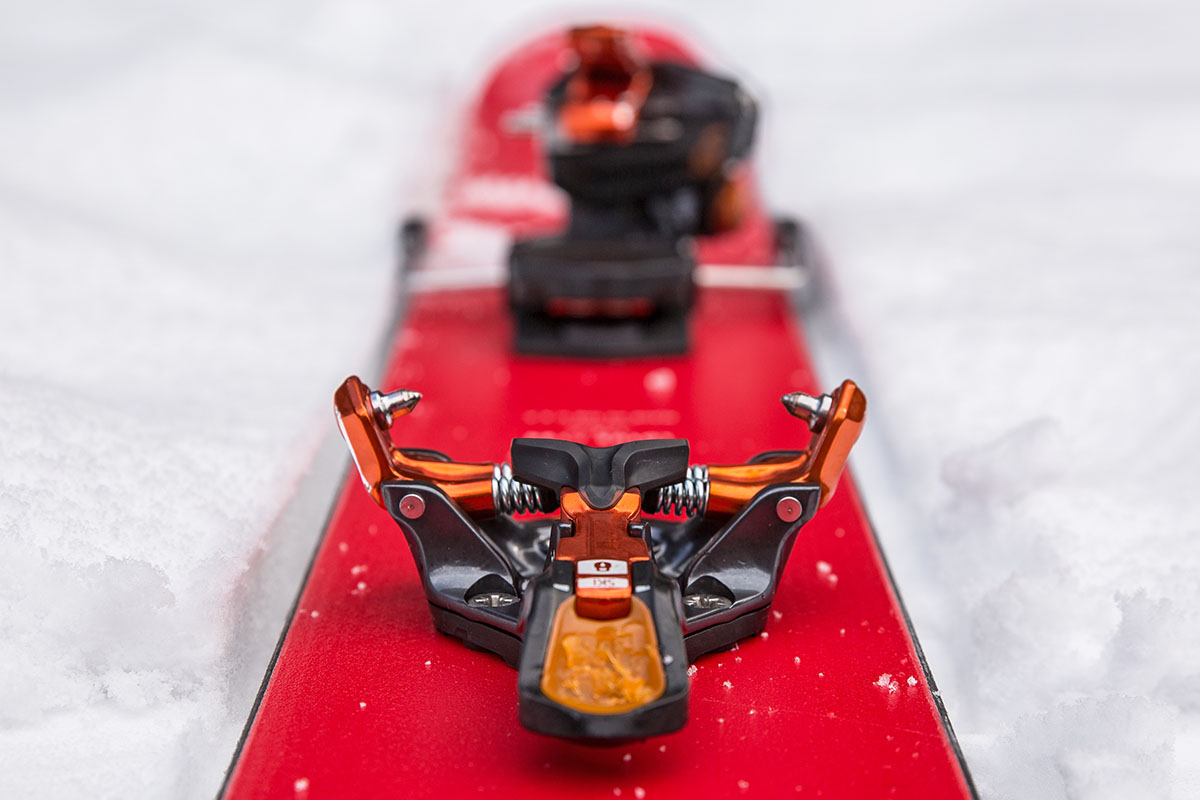
Switchback Travel ( Brian McCurdy )
We use affiliate links and may receive a small commission on purchases. Read more about us .
Whether you're new to backcountry skiing or have been earning your turns for decades, selecting an alpine touring binding can be a particularly intimidating task. For the 2024 season, the market is absolutely flooded with options, ranging from ultralight tech bindings for the uphill-focused crowd to capable designs that play double duty in the resort and backcountry. No two models are the same and there’s something for everyone, so the main task is matching your style and needs with the right binding. To help you choose, we've compiled a thorough breakdown of the best touring bindings on the market, including a comparison table and detailed buying advice below the picks. To complete your setup, be sure to check out our articles on the best backcountry skis and backcountry boots .
Our Team's Backcountry Ski Binding Picks
- Best Overall Backcountry Ski Binding: Salomon MTN Pure
- Best Hybrid Resort/Backcountry Ski Binding: Salomon S/Lab Shift MNC
- Best Ultralight Backcountry Ski Binding: Dynafit Superlite 150
- Best Skimo Race Binding: Dynafit DNA Binding
- Best Budget Backcountry Ski Binding: Tyrolia Ambition 10
Best Overall Backcountry Ski Binding
1. salomon mtn pure ($650).
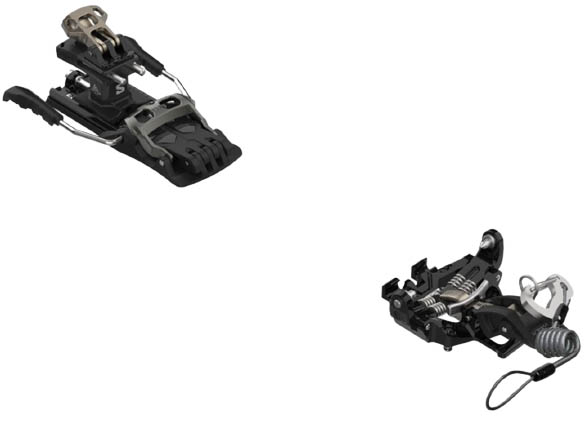
For the majority of skiers, the best backcountry ski binding is a tech design that deftly balances uphill and downhill performance, weight, ease of use, and durability. With these metrics in mind, the Salomon MTN Pure is our overall favorite, especially for those that put a premium on user-friendliness and well-rounded performance. Tech bindings can come with a steep learning curve, but the MTN is easy to step into and a breeze to transition between ski and tour modes. The binding showcases its simplistic nature with just three release value settings, and you can also opt for the brakeless version (with included leash). Finally, Salomon nailed the build quality with metal-heavy heel and toe pieces that have held up impressively well throughout our testing.
All that said, the MTN Pure isn’t ideal for everyone, and expert skiers in particular might not like the inability to customize the release settings. The Marker Alpinist 12 below performs even better on the descent with a gapless heel piece that lends a smooth feel and consistent release, although it’s not as easy to transition as the Salomon. Alternatively, if you’re looking for a burlier binding that prioritizes power and stability on the downhill (at the cost of added weight), it’s worth stepping up to a tech design with an alpine heel like the Fritchi Tecton below, or choosing a resort-capable model like the popular Salomon Shift. However, whether you’re a recent backcountry convert, experienced powder hound, or somewhere in between, the MTN Pure puts it all together better than most, earning our top spot of the 2024 season... Read in-depth review See the Salomon MTN Pure
Best Hybrid Resort/Backcountry Ski Binding
2. salomon s/lab shift mnc 13 ($600).
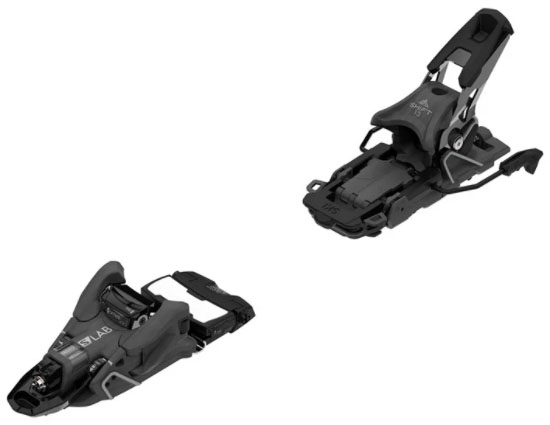
Immediately after its release, Salomon's Shift changed the backcountry ski binding landscape. Simply put, it was the first tech binding that provided legitimate performance and safety while hitting big lines or bombing laps at the resort. The magic formula here is a fairly standard alpine-style heel piece paired with a wildly innovative toe piece, which functions like a pin-ready setup for uphill travel and converts into a traditional downhill toe clamp in ski mode. The net result is impressive versatility in terms of performance and boot-sole compatibility: You can wear your downhill boots and put down the power in hardpack and crud, or go lightweight with your touring setup on a backcountry adventure.
What are the downsides to the Shift? The binding’s two-mode toe piece and beefy heel add some weight, so those who like to go far or fast will want to stick with a design like Salomon’s MTN Pure above or the Marker Alpinist below. Additionally, the Shift is not compatible with alpine touring boots that don’t have full toe and heel lugs, which leaves out models like the Dynafit Hoji Pro Tour. Finally, in testing we found that the heel’s locking lever occasionally pops out while in tour mode (also releasing the brakes), and all the Shift’s moving parts can be a bit onerous to operate. As a result, this wouldn’t be our top choice for those skiing exclusively in the backcountry. But these gripes are fairly minor for a game-changing product that still stands out as the best hybrid binding on the market. Of note: Like the MTN Pure above, it’s also sold under the Armada and Atomic brand names, with the only difference being color... Read in-depth review See the Salomon S/Lab Shift MNC
Best Ultralight Backcountry Ski Binding
3. dynafit superlite 150 ($650).
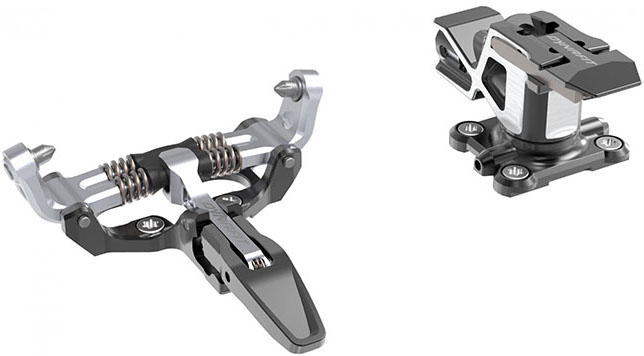
While the majority of backcountry riders will opt for an all-rounder like the Salomon MTN Pure above, decidedly uphill-focused skiers can shed grams and streamline their kit even further with a design like the Dynafit Superlite 150. The Superlite is inspired by the lightest skimo race bindings on the market, but with more versatility for everyday touring and ski mountaineering. As a result, it’s one of the best ultralight yet highly durable options for ski mountaineers and endurance enthusiasts. For the ascent, you get a 10.6-ounce build with two riser heights (plus flat) and the option for brakes. And on the downhill, the Superlite truly stands out in its weight class, with a nice balance of retention and release safety paired with a wide 4-13 DIN range, as well as an all-metal heel (minimizing the chance of breakable parts).
As with any ultralight gear, there are some trade-offs inherent in the Superlite’s design. The most glaring is that there’s zero room for boot sole length adjustment, making it difficult to share skis or swap out boots (you can purchase a heel adjustment plate separately for an extra $100). Second, the 150’s minimum forward release is 7, which is a bit high for lighter or less aggressive skiers (the lateral release value is still 4-13). And finally, you’ll have to reach down to manually spin the heel piece rather than using your pole, and the tallest riser is just 51 millimeters (some risers extend up to 85mm or more). Despite these compromises, the Superlite 150 is in a league of its own as a fully featured ultralight binding with great downhill performance. Additional Dynafit bindings worth considering include the even lighter-weight Mezzalama (9.4 oz.), which has a lower vertical release value (5-10) and only one riser, and the Blacklight , which is a great value at $500 but substantially heavier at 1 pound 3.8 ounces. See the Dynafit Superlite 150
Best Skimo Race Binding
4. dynafit dna binding ($700).
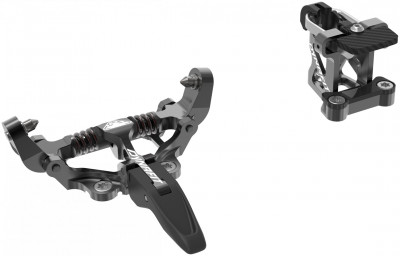
Skimo is a rapidly growing sport and one of the newest additions to the winter Olympics, debuting in 2026. And while most local races are welcoming to all levels of skiers and splitboarders, you'll need an extraordinarily lightweight setup to be competitive. This is where skimo race bindings come into play, and the Dynafit DNA is our top pick. Using a mix of aluminum, carbon, stainless steel, and synthetic materials, the binding’s toe piece is a pared-down version of the typical pin design—and it’s been tweaked for better retention. Further, the tiny, compact heel piece is particularly unique: It transitions from tour to ski mode with the simple flip of a riser, saving racers precious seconds during competition. Finally, although the binding is small and weighs only ounces, it’s designed to withstand speedy off-piste skiing in all manner of conditions.
Of course, the DNA is a specialty binding that is intended for racing or training on ultra-lightweight skimo race skis. It is not suitable for driving beefier skis or for ski mountaineering or everyday touring settings—if you want a weight-conscious setup for these disciplines, we recommend Dynafit’s race-inspired but more versatile Superlite 150 above or the ATK Trofeo below. Further, a skimo race setup is an expensive investment when you tally up the bindings, ultralight skis, and racing boots (not to mention a lycra suit). Before throwing down for the whole setup, we recommend trying a race or two and making sure it’s something you enjoy. See the Dynafit DNA
Best Budget Backcountry Ski Binding
5. tyrolia ambition 10 ($379).
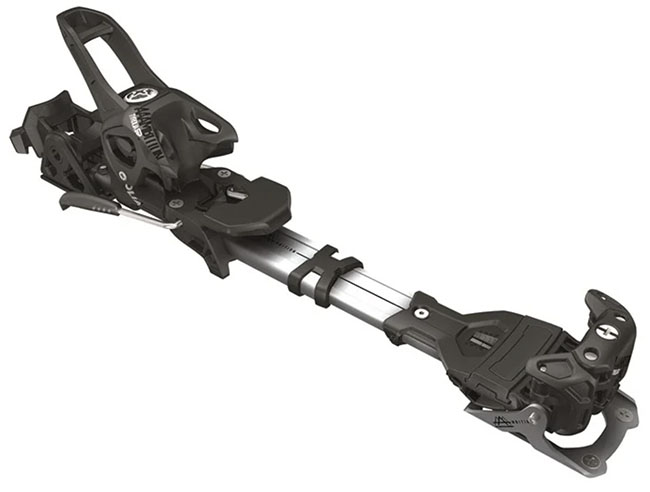
We'll cut straight to the chase: Backcountry bindings are expensive. In fact, the average model here is about twice as much as a standard alpine binding (our top-ranked Marker Griffon 13 ID is a relatively affordable $270), which—along with boots and skis—can make putting together your initial touring setup rather daunting. One of the best ways to save is by opting for a frame binding, which offers versatility (they pair with a wide range of boots, including alpine models) and downhill performance in an affordable package. Of course, the most obvious downside to frame bindings is weight: The Tyrolia Ambition 10 here clocks in at a whopping 4 pounds 5.1 ounces, which is more than three times the heft of many of our favorite all-around tech bindings.
For uphill-focused skiers, weight is a major factor and can put a real dent in your efficiency. If you prefer to stay in the tech category, the ATK Kuluar 12 or Dynafit Radical are two of the best budget options (starting around $450-$550). But for casual weekenders, new skiers, or those who plan to split their days between the resort and backcountry, a strong case can be made for an affordable and versatile binding like the Ambition here. But expect a sizable performance drop: in addition to its added heft, the Tyrolia's walkability suffers with a pivot point in front of the toe. Additionally, at 10 on the DIN scale, aggressive riders will be better off with a heavier option like the Salomon Shift above, the Marker F12 or Baron EPF 13, or the 12-DIN Ambition . But the Tyrolia is an affordable choice for beginners, budget-conscious skiers, or riders who don’t want to invest in a tech-compatible boot. See the Tyrolia Ambition 10
Best of the Rest
6. atk raider 13 evo ($700).
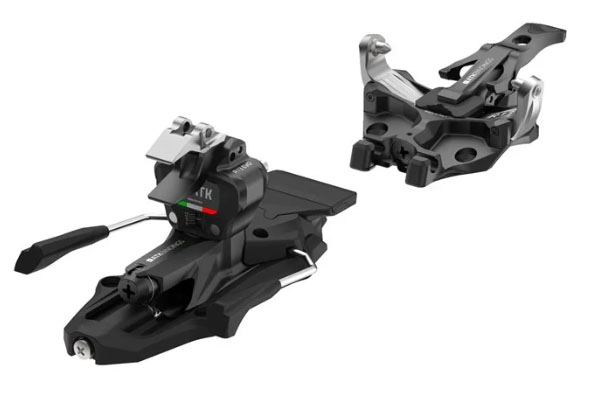
ATK’s reputation in the U.S. for producing high-quality and reliable tech bindings has only grown in recent years, and we’re excited to see that the Raider 13 Evo is now available in the U.S. market (it was introduced in Europe last year). A couple design features make the Raider Evo noteworthy, and first is the automatic ski brake. While other Raider models require pressing a button on the heel piece to raise the brake, the new Evo line has a system that raises and locks the brake when you stomp on the heel plate (in tour mode), and it then automatically releases the brake when you rotate the binding to downhill mode. In short, now you don’t have to think about the brake at all. Next, the binding’s toe piece has an adjustable lateral release value (like its heel piece), which means that the binding as a whole can be better-tuned for release, unlike many tech bindings that have an adjustable heel piece and fixed toe.
Aside from these standout features, the Raider 13 Evo offers a traditional tech design that goes head-to-head with models like the MTN Pure above and Ski Trab Titan Vario.2 below. ATK’s durability is best-in-class with CNC-machined pieces, aircraft-grade aluminum, and a smattering of carbon throughout the components. It’s a big investment at $700 and among the priciest pin bindings here—which is its biggest knock and makes it a little less viable for casual or budget-oriented users. Additionally, weight goes up slightly with the emphasis on metal in the construction. But the latest Raider Evo is undeniably premium and built to last. Note: Black Diamond is a U.S. distributor for ATK, making most of their bindings fairly easy to find stateside. See the ATK Raider 13 Evo
7. Fritschi Tecton 13 ($680)
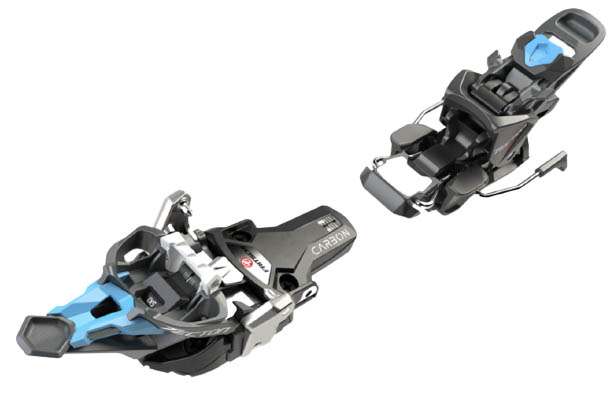
Switzerland-based Fritschi specializes in backcountry bindings, with a streamlined yet impressive lineup ranging from the entry-level Scout below to the impressive Tecton here. The Tecton defines the “freetouring” category, combining a tech toe (like that of the MTN and Superlite above) with an alpine heel similar to what we see on the Salomon Shift. This hybrid design, which was updated last season to be lighter and even more powerful, balances security and performance on the downhill—nearly on par with many standard resort bindings—with a reasonable uphill weight. With brakes, the Fritschi clocks in at just 2 pounds 12.4 ounces for the pair, more than a full pound less than the Shift above.
If you’re a hard-charging skier or like to spend the odd day at the resort, you might find yourself choosing between the Shift and a binding like the Tecton here. The main distinction between these two models is the toe piece: The Shift’s innovative design means you get a full alpine binding for the descent, which provides superior elasticity and feel and can also be paired with an alpine boot (it also earns it an official TÜV certification for DIN). The Tecton isn’t quite as versatile (it pairs with tech boots only) but still provides impressive performance for a tech binding without the safety compromises inherent in most of these designs (for more, see the section on Release Values in our buying advice). In short, we’d recommend the Shift for those who spend a lot of time inbounds, but the Tecton offers our favorite combination of weight and performance for aggressive skiers who stick to the backcountry. Finally, keep in mind that Fritschi also makes the Vipec Evo , which combines the toe piece of the Tecton with a standard pin heel. See the Fritschi Tecton 13
8. Marker Alpinist 12 ($550)
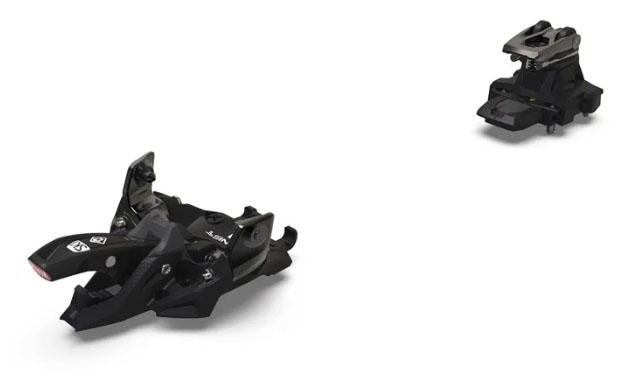
Marker’s Alpinist 12 goes head-to-head with the Salomon MTN Pure for the best lightweight tech binding here. The two bindings are very similar in terms of both price and weight (keep in mind the brakeless version is listed here), but the Alpinist 12 tacks on a bit of extra tech with its "gapless" (also called a “kiss gap”) heel piece design. This allows the heel to move along a track to compensate for ski flex, rather than the buffer more common in tech bindings, which translates to better downhill performance, including a smoother ride and more consistent release than a model like the MTN Pure. And the real kicker is that the Marker accomplished this at a truly impressive weight: At just 1 pound 9.4 ounces with brakes, the Alpinist undercuts the gapless G3 Ion 12 (2 lb. 8.8 oz.) by a huge margin.
With all that praise, why do we have the Marker ranked here? In short, the Salomon is the more approachable option for the majority of skiers: it’s easier to step into and transition with a 90-degree heel piece rotation (the Alpinist’s is a full 180˚), and provides a bit more assurance in terms of durability with more metal parts (the Marker uses a lot of carbon-reinforced plastic). It’s also a bit lighter when you factor in brakes (sold separately, they'll add about $60 and 7 oz. for the pair). But for the more experienced skier who’s familiar with tech bindings and doesn’t need a gentle learning curve, the Alpinist’s combination of downhill performance and value is truly hard to beat, and Marker even updated their toe piece last season with a rubber “stop pad” and wider platform to make stepping into it easier. Finally, unlike the MTN Pure, which offers only three release settings, you can also tweak the Alpinist’s DIN anywhere between 6 and 12 (or save some cash with the 8-DIN or 10-DIN models). See the Marker Alpinist 12
9. Dynafit ST Rotation 14 ($700)
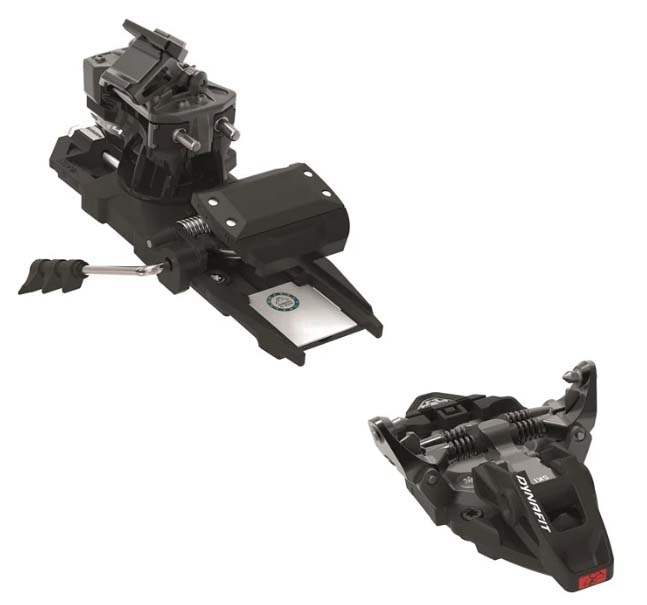
Dynafit is credited with starting the tech binding craze—some still refer to the category simply as “Dynafit bindings”—and among their core offering is the ST Rotation. Evolving from the popular Radical line, the ST Rotation’s standout feature is its pivoting toe piece, which offers elasticity and consistent release like an alpine binding (unlike the vast majority of tech bindings, this earns the Rotation a TÜV certification for safety). Compared to the aforementioned Radical, it’s easier to step into thanks to a catch that keeps the toe piece gently locked into a centered position. Finally, many will appreciate the ability to choose among release options depending on size and skiing ability: 7-, 10-, or 14-DIN.
The ST Rotation isn’t nearly as light as options like the MTN Pure and Alpinist above, but the next-level downhill performance and safety are well worth it for some. In the end, the Rotation fills a nice gap between the two categories and slots in as one of the most refined touring designs on the market, including easy transitions between ski and tour modes and smooth performance on both the ascent and descent. Finally, we'd be remiss not to mention that Dynafit’s durability and expertise are time-tested, and their bindings seem to take a beating significantly better than most offerings here. See the Dynafit ST Rotation 14
10. Marker Kingpin 13 ($700)
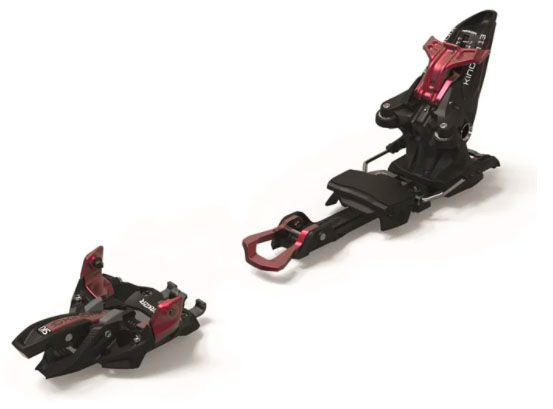
Like the Fritschi Tecton above, the Kingpin is a freetouring binding designed for skiers who don’t like to hold back. It’s also one of the only setups here that earns a TÜV certification for DIN, giving the Kingpin the credentials to stamp its mark in a crowded and highly competitive market. For the descent, you get the safety and secure feeling of a quality 13-DIN alpine binding that releases both vertically and laterally at the heel. On the uphill, the reasonable 3-pound weight easily undercuts most other hybrid models. It’s true that the Kingpin is overkill for all but the most expert-level skiers, but if you’re dropping big lines, it’s one of the most capable tech bindings money can buy.
The Kingpin wasted no time in becoming one of the most popular tech bindings ever made, but it hasn’t kept pace with recent improvements in the market. Compared to the Fritschi Tecton above, it’s a bit heavier and doesn’t include the added release mechanism at the toe, which could be a dealbreaker for aggressive skiers (the Tecton doesn't have an official TÜV certification, but it's very confidence-inspiring overall). And held up against the Shift, you give up alpine boot compatibility and the true alpine toe, which are great features for those who dabble both in and out of bounds. But these are all fairly small nitpicks for such a highly capable design, and there's a reason it's garnered so much attention over the years. Importantly, Marker recently expanded the line to include the Kingpin M-Werks , which combines the trimmed-down toe piece of the Alpinist, the heel of the standard Kingpin, and a host of other upgrades. The result: a drop in weight (2 lb. 14.2 oz.) but a steep $800 price tag. See the Marker Kingpin 13
11. Ski Trab Titan Vario.2 7-9 ($460)
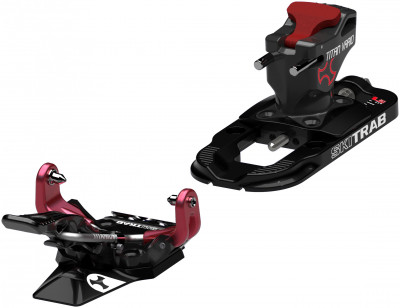
Designed and manufactured in the resort town of Bormio, Italy, the Titan Vario.2 boasts an excellent combination of performance and retention at a fast-and-light-ready weight. One unique touch is its toe piece, which has its resting state in the clamped position—opposite the market standard. This means you have to depress the lever to step in, but once you’re in, you’re not going anywhere (the jaws also work independently of each other, which further reduces the chance of accidental release). But the biggest news here is the Titan's gapless heel piece, which uses a spring and flexible track to deliver a whopping 43 degrees of elasticity. Added up, you get remarkable downhill capabilities and safety for a tech design at a low weight of just 1 pound 1.6 ounces per pair.
Very few bindings match the cult-like following of Ski Trab’s Titan Vario.2, but there are some notable trade-offs to the niche design. Namely, the Ski Trab can be hard to track down in the U.S. (Skimo.co carries it), the optional brakes max out at 94 millimeters, and the DIN isn't adjustable, despite what the listed 7-9 range might imply (it also comes in fixed 5-7 and 9-11 models). Additionally, the reverse toe piece can take some getting used to, although most tech bindings have some amount of learning curve. But there’s no denying the standout retention, downhill savvy, and durability of the Titan Vario.2, which should be near the top of the list for avid ski mountaineers and endurance enthusiasts who like to charge on the descent. See the Ski Trab Titan Vario.2 7-9
12. Plum Guide 12 ($499)
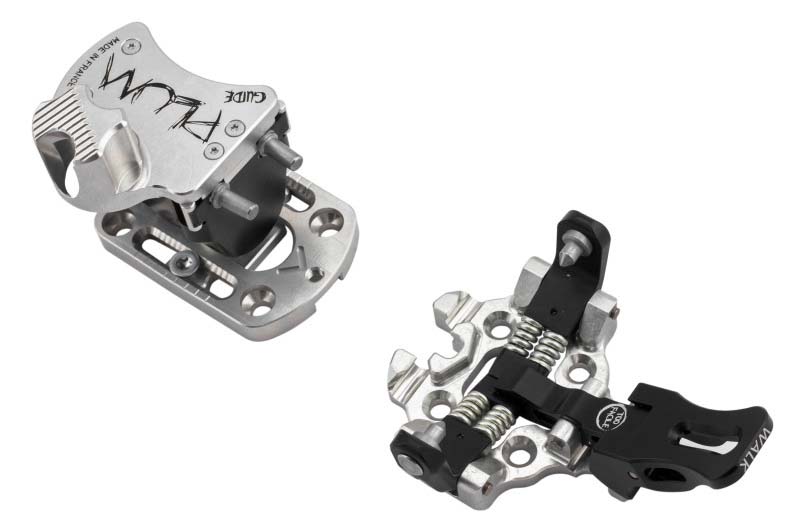
As backcountry skiing continues to rise in popularity, the binding market has followed suit. And as we've seen above, many of the best designs consistently come out of the European Alps from names like Dynafit, Ski Trab, ATK, Fritschi—and Plum. Based in France, Plum sells a range of high-quality, all-metal backcountry bindings that run the gamut from ultralight skimo offerings to the Guide 12 here. A best seller that’s been on the market for a decade, the Guide 12 is a proven design with adjustable forward and lateral release values in both the toe and heel pieces, multiple heel riser heights than can be changed on the fly with a ski pole, and a forward/backward adjustable heel that can accommodate a range of boot sole lengths. It’s all wrapped up in a competitively lightweight package that undercuts most competitors (like the MTN Pure, Dynafit Rotation, and ATK Raider 13 Evo) by around $150 to $200.
With an adjustable release value range from 5.5 to 12, the Guide 12 is a sleek and easy-to-operate tech binding that works well for everyone from new backcountry skiers to seasoned veterans and—as its name suggests—ski guides. That said, its downhill performance can’t match other top picks like the Marker Alpinist 12 (with its gapless heel) or Fritschi Tecton 13 (thanks to its alpine-like heel). Another notable issue that we’ve encountered with Plum bindings is finding a local ski shop with the proper jig to mount them (one of our testers had difficulty finding a shop that would mount the Plum Oazo and ended up exchanging it for an ATK binding). This may not be an issue with the Guide 12 because it has a very similar mounting pattern to popular designs like the Dynafit Rotation, but it’s worth double checking beforehand. If you can get the logistics sorted, the Guide 12 is a reliably built, well-rounded tech binding with a loyal following. See the Plum Guide 12
13. G3 Ion 12 ($664)
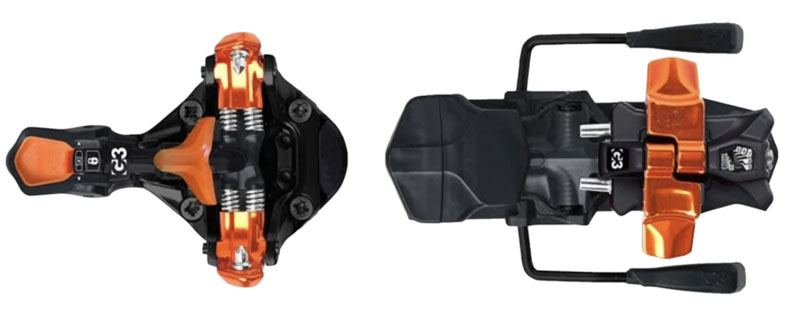
G3 shook up the tech market with its Ion bindings, which have arguably the most user-friendly design in the business. Tech bindings are known to be finicky when stepping in—particularly in powder—but the Ion’s tall stand height makes it easy to clear out snow with a ski pole, and the pins hook up consistently with your boots thanks to a built-in bumper at the front. Once you’re in, transitioning between modes is pretty seamless and quick: the heel rotates 90 degrees in either direction, and the large riser bars are easy to flip with your pole’s basket or grip. With the Ion 12, we’ve mastered the art of switching into ski mode by levering the heel piece with our pole as we stomp down (and then ripping the skins), and are consistently the first skier in our party ready to hit the slopes at transitions.
Another strong suit of the Ion 12 is its kiss-gap heel design, which translates to great downhill performance (the Marker Alpinist is another pin binding with this feature). However, at 2 pounds 8.8 ounces, the Ion is far from a weight leader. If you're going this heavy, you might as well bump up to an alpine heel design like the 2-pound-12.4-ounce Fritschi Tecton above (even the TÜV-certified Dynafit ST Rotation would be a better option). But the biggest knock against the G3 is durability: We’ve lost track of how many times we’ve heard about the Ion (or its lightweight sibling, the Zed) breaking in the field, which is particularly grim if you’re ski mountaineering or venturing into remote areas. That said, if you’re gentle on your gear and prioritize ease of use above all else, the Ion 12 (also sold in a 10-DIN version ) is worth a look... Read in-depth review See the G3 Ion 12
14. Marker Duke PT 16 ($700)
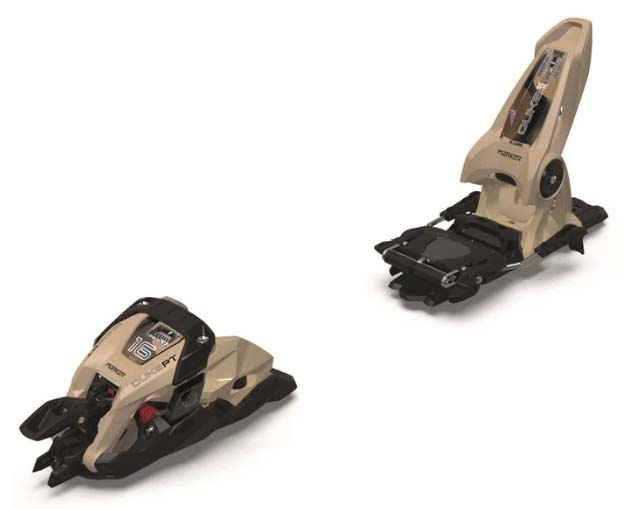
The immediate popularity of the Salomon Shift has proven that there’s a strong market for all-in-one resort/backcountry bindings, and Marker has thrown its hat into the ring with the Duke PT. Like the Shift, the Marker design is highlighted by an innovative toe piece that functions like a tech design in tour mode and a sturdy alpine binding on the downhill (it’s also compatible with both boot types). The models differ, however, in that the Marker’s alpine toe needs to be moved out of the way for climbing either by flipping it back or removing it completely, while the Salomon’s toe stays in place. This adds time to transitions, although the Duke PT is a decent climber overall, easily beating out frame options in both efficiency and comfort.
Who is the Duke PT best for? With a sturdy heel, 16-DIN release, and the aforementioned alpine toe, the binding is well equipped for aggressive skiers who split their time between resort days and freeride touring. But to be clear, this burly construction does come with a significant weight penalty: With the toe piece in place, the Duke PT is a full 2 pounds heavier than the Salomon Shift (that said, this 16-DIN model has a much higher release value than the 13-DIN Shift). Removing the toe pieces saves you about 1 pound 3.5 ounces for the pair, but the Duke PT still can’t match the Salomon in this department. In the end, ultra-aggressive riders with true big-mountain ambitions may prefer the Duke PT, but the lighter and more streamlined Shift remains the gold standard for most skiers. See the Marker Duke PT 16
15. ATK Trofeo Plus ($470)
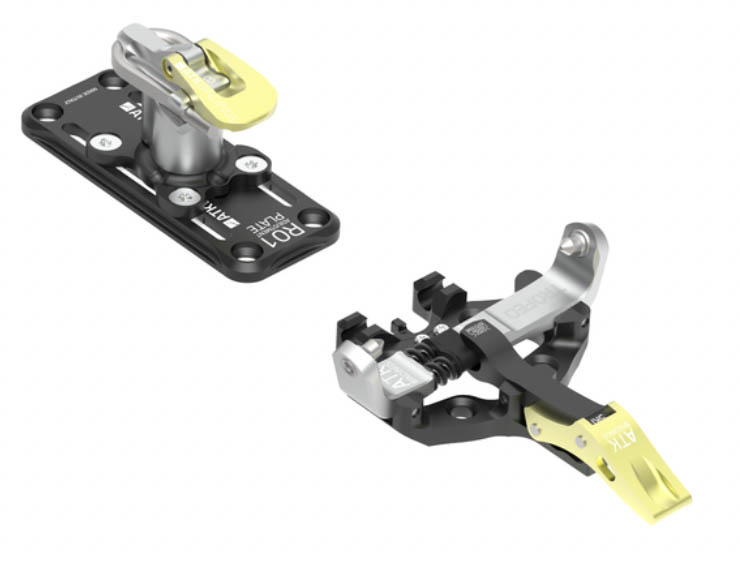
You really can’t go wrong with ATK bindings, and we love the Trofeo for its versatility for both skimo racing and ski mountaineering. Like most skimo bindings, the Trofeo Plus is lightweight (the standard version is just 10.2 oz. for the pair) and pared down with a fixed release value, but a number of features make it an attractive option for everyday touring. With the Plus model here, you get a durable all-metal build, ski crampon receptor, and an accessory plate for adjusting the boot sole length. What’s more, the binding offers three height settings (two risers and one flat), which we don’t always see in skimo designs. All in all, the Trofeo is a super lightweight and burly binding that you can accessorize to best meet your ski touring goals.
Who is the best target audience for the Trofeo? Although advertised as a race binding, it’s a great setup for weight-conscious ski mountaineers, similar to the Dynafit Superlite 150 above. In fact, we know a few skiers who rely on the Trofeo as their daily driver, pairing it with skis as wide as 110 millimeters at the waist. But with a fixed DIN, you’ll want to know exactly what (and who) the binding is for, and the max riser height of 44 millimeters is not ideal for steep pitches. In the end, the Superlite 150 is the more well-rounded option, but you can save considerably with the Trofeo here. It’s also worth checking out ATK’s Kuluar 12 , which weighs just a little more at 1 pound 1.6 ounces for the pair and features an adjustable lateral release (up to 12-DIN) and 20 millimeters of boot sole length adjustment. See the ATK Trofeo Plus
16. Fritschi Scout 11 ($400)
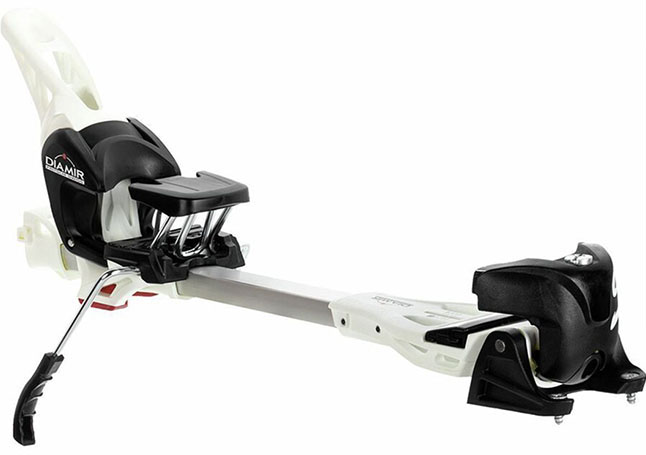
The second frame binding to make our list is the Fritschi Scout. As we saw above with the Tyrolia Ambition above, frame bindings are among the heaviest options available for backcountry skiers, but the trade-off is excellent downhill performance and versatility with a range of boot types. The Scout here is no exception: It's fully DIN-certified, compatible with touring and alpine boots, and checks in at 3 pounds 14.8 ounces, which is almost a half-pound lighter than the Tyrolia. For backcountry-curious resort skiers or those who don’t want to spend upwards of $600 on a tech design, the Scout is a really nice option.
There are a number of other frame bindings worth having on your radar, including the aforementioned Tyrolia Ambition and Marker F10/F12 Tour. All three models have competitive price tags (you’ll spend up for the 12-DIN versions), but the Scout is the lightest of the group by a decent margin (the Ambition 10 and F10 Tour are 4 lb. 5.1 oz. and 4 lb. 13.6 oz., respectively). On the other hand, 11-DIN can be a little low for some, and Fritschi only offers the Scout with the one low release-value range. The Tyrolia gets the edge for us with a $21-lower price point, but the Scout 11 is nevertheless a great option for recreational skiers who go on the occasional tour. See the Fritschi Scout 11
17. Cast Freetour Pivot 15 ($735)
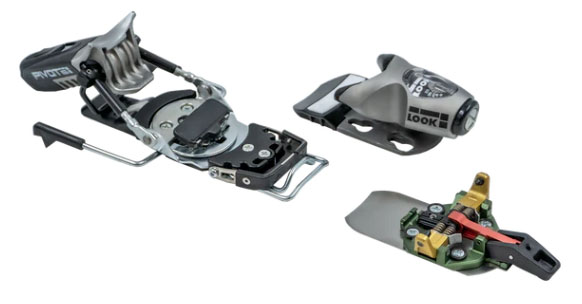
The Salomon Shift dominates the hybrid binding market, but for truly unmatched downhill performance, Cast's Freetour Pivot is worth a look. The unique setup takes Look’s popular Pivot alpine binding—modified so that the toe piece can be removed—and adds Cast's pin-tech touring toe for swapping in on the ascent. In other words, you’re getting one of the most capable and powerful alpine bindings on the market (available in 15- and 18-DIN variations) along with all of the uphill benefits of a tech binding. For the small group of expert skiers for whom the Shift and Marker Duke fall short, the Freetour Pivot is a functional and highly capable solution.
For the rest of us, however, the Cast Freetour Pivot probably isn’t worth the trade-offs. The swappable toe system has a lot of moving parts (don’t lose your spare toe piece) and requires additional time and tweaking at each transition. It also adds considerable weight and heft, checking in 4 pounds 6.5 ounces in tour mode and nearly 7 pounds with the alpine toe. Further, you’re paying a sizable premium at $735, and a DIN of 15 or 18 is overkill for most riders, especially in the backcountry. And if you already own a Pivot binding, the Cast Freetour Upgrade Kit ($300) includes all the parts required for conversion. See the Cast Freetour Pivot 15
Backcountry Ski Binding Comparison Table
Backcountry ski binding buying advice, what is a backcountry ski binding.
- Uphill vs. Downhill Performance
- Backcountry Ski Binding Types
- What's Skimo?
- Release Values and TÜV-Certified DIN
Brakes vs. Leashes
Heel risers and climbing aids, transitioning and ease of use, durability and materials, ski boot compatibility, pairing bindings with skis, buying ski bindings online.
Backcountry ski bindings, otherwise known as AT (alpine touring) bindings, are designed specifically for use when skiing in areas with no chairlift access. They differ from standard downhill (alpine) models in a few ways, the most notable of which is uphill capability. Whereas a downhill ski binding is only built to function with both your toe and heel locked in, a backcountry binding operates in both uphill mode (toe on a hinge) and downhill mode (toe and heel fully locked in). Additionally, they’re designed with an emphasis on weight savings—essential for uphill travel—and many are only compatible with backcountry-specific boots with tech fittings at the toe (there are a few exceptions to this rule).
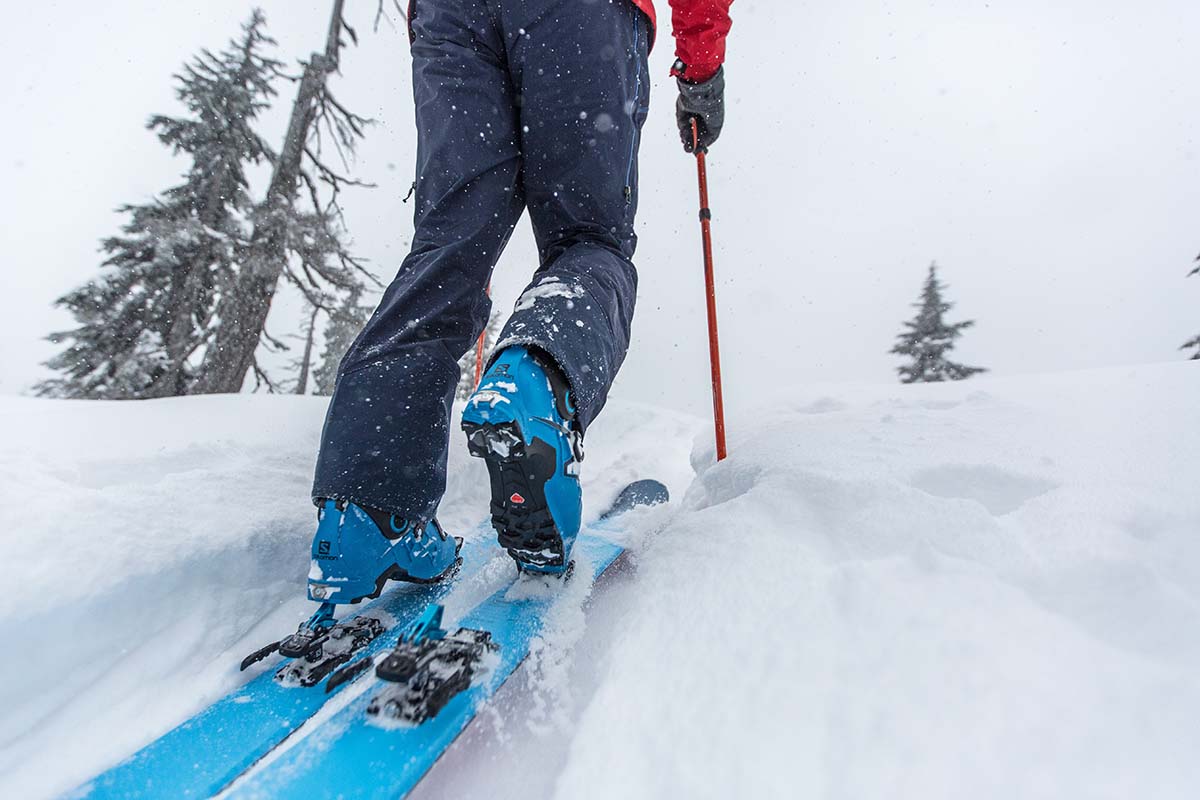
Before we go any further, we want to make one thing clear: There is no one-size-fits-all backcountry binding. In other words, there is no one ideal binding for every skier—but there is an ideal binding for each skier. Your choice will come down to a number of factors, including uphill and downhill performance, weight, price, durability, ease of use, retention, safety, and compatibility with your current ski or ski boot. Read below to find out more, and be sure to also check out our top picks above, which line up with many popular backcountry skiing styles.
Uphill vs. Downhill Performance
When shopping for a backcountry binding, one of the first questions you’ll want to ask yourself is: Where do I want this to perform best? Given the opposing demands of backcountry travel, bindings will usually excel on either the ascent or the descent, but rarely both. If you’re motivated by long ski traverses, endurance missions, and fast-and-light travel, you’ll want to look for a lightweight tech binding with an efficient pivot point under the toe. There are a few other factors to also keep in mind, including riser heights, ease of transition, and durability for remote environments. Bindings like the Salomon MTN Pure , Ski Trab Titan Vario.2, and Dynafit Superlite 150 are some of our favorites in this category.
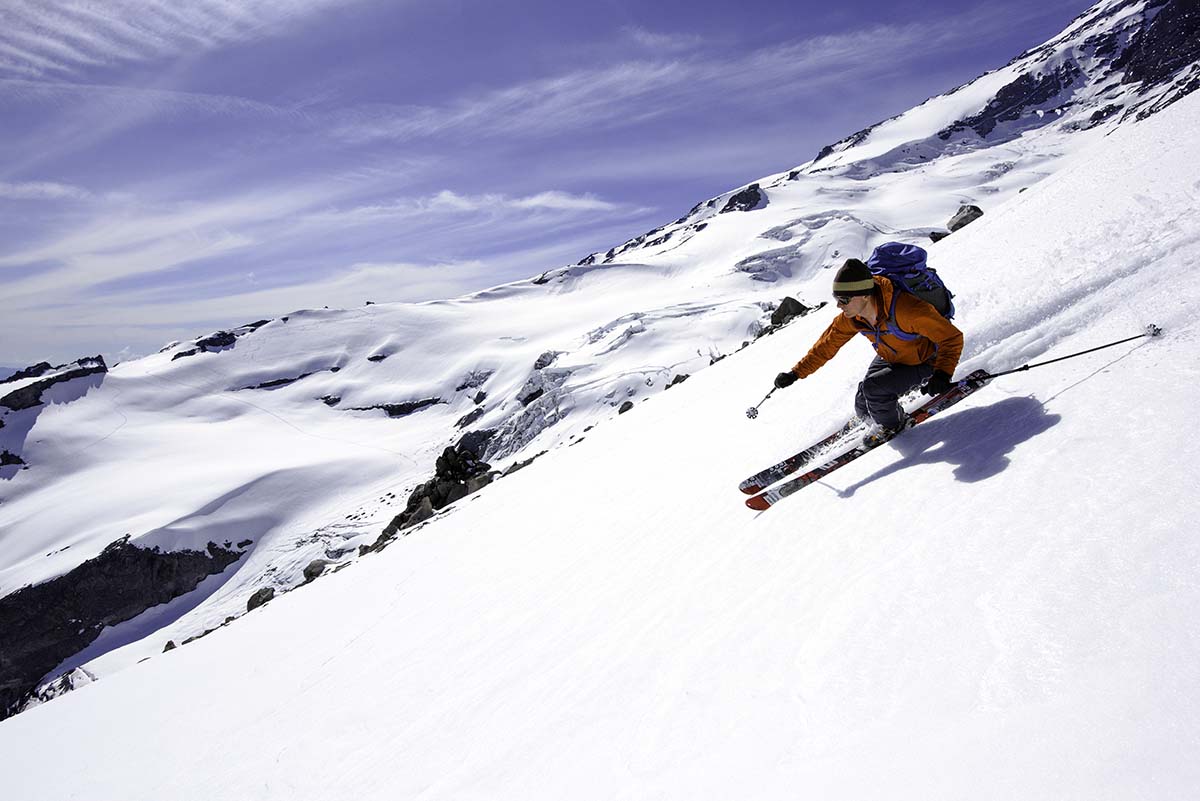
On the other hand, for skiers who endure the uphill for rowdy freeride descents (including those who typically access terrain via sled, snocat, or helicopter), the ideal binding will have an alpine heel and prioritize safety features like lateral toe release and official TÜV certification for DIN. A few tech designs fall into this category—namely the Marker Kingpin—but hybrid bindings like the Salomon S/Lab Shift MNC 13 and Marker Duke PT really shine, with toe pieces that lock down to mimic the connection of an alpine binding. Keep in mind, however, that weight typically matters less for those who prioritize downhill performance, and many of these bindings are notably heavier as a result.
Backcountry Binding Types
Tech Bindings Also referred to as pin bindings, tech bindings are the most common form of backcountry ski binding and characterized by their skillful combination of uphill and downhill performance. These designs are the lightest of the bunch (most versions range from 1 to 3 lb. for the pair), feature separate heel and toe pieces, and are compatible with tech boots only. Some even swap in an alpine heel (similar to a binding used for resort skiing) for the standard pin heel, which adds a lot of downhill capability without detracting from walkability or tacking on too much weight (the Marker Kingpin 13 , for example, clocks in at 3 lb. 2.4 oz.). Tech bindings are generally offered with either a brake or a leash, and the majority have adjustable boot-sole lengths and customizable release values.
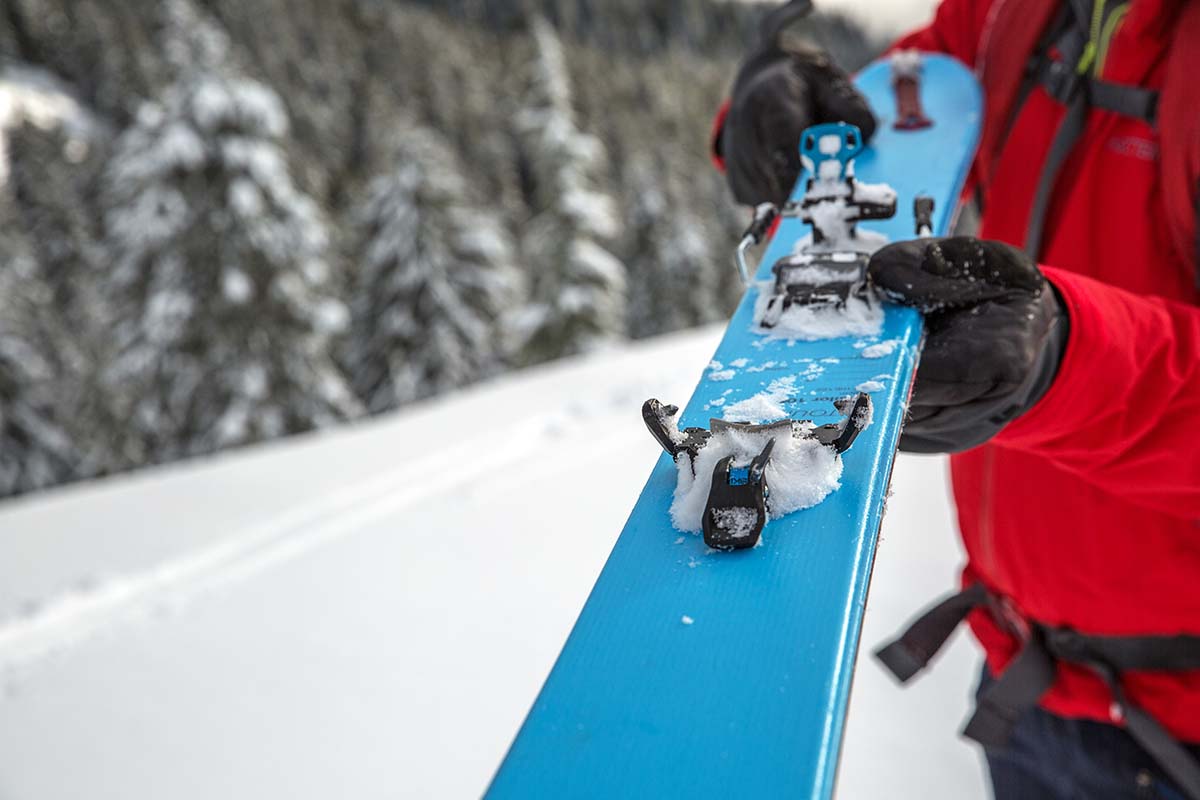
Due to their lightweight builds and pivot point near the ball of the foot that allows for a natural stride, tech bindings are our first choice for skiers who spend most of their time in the backcountry and especially those who want to move efficiently uphill. Downhill performance ranges from serviceable to very good, with the highest-performing models bringing in design features like a kiss-gap/gapless heel, laterally releasing toe piece, or even an alpine heel. You can expect to see an increase in both weight and price with these options, which are primarily designed for particularly heavy or aggressive skiers.
All that said, we’d be remiss not to mention the downsides associated with tech bindings. Given their unique design and intention, they do not have the same release attributes as alpine-style bindings, including frame bindings and hybrid designs. In fact, most tech bindings do not earn a TÜV certification for DIN (the Dynafit ST Rotation and Marker Kingpin are two exceptions). The biggest reason for this is their fixed toe (alpine bindings have a toe that releases with lateral force), which offers no elasticity in the event of a fall and has been implicated in many leg injuries (specifically, spiral tib/fib fractures). For more on the topic, see our section on Release Values and TÜV-Certified DIN below.
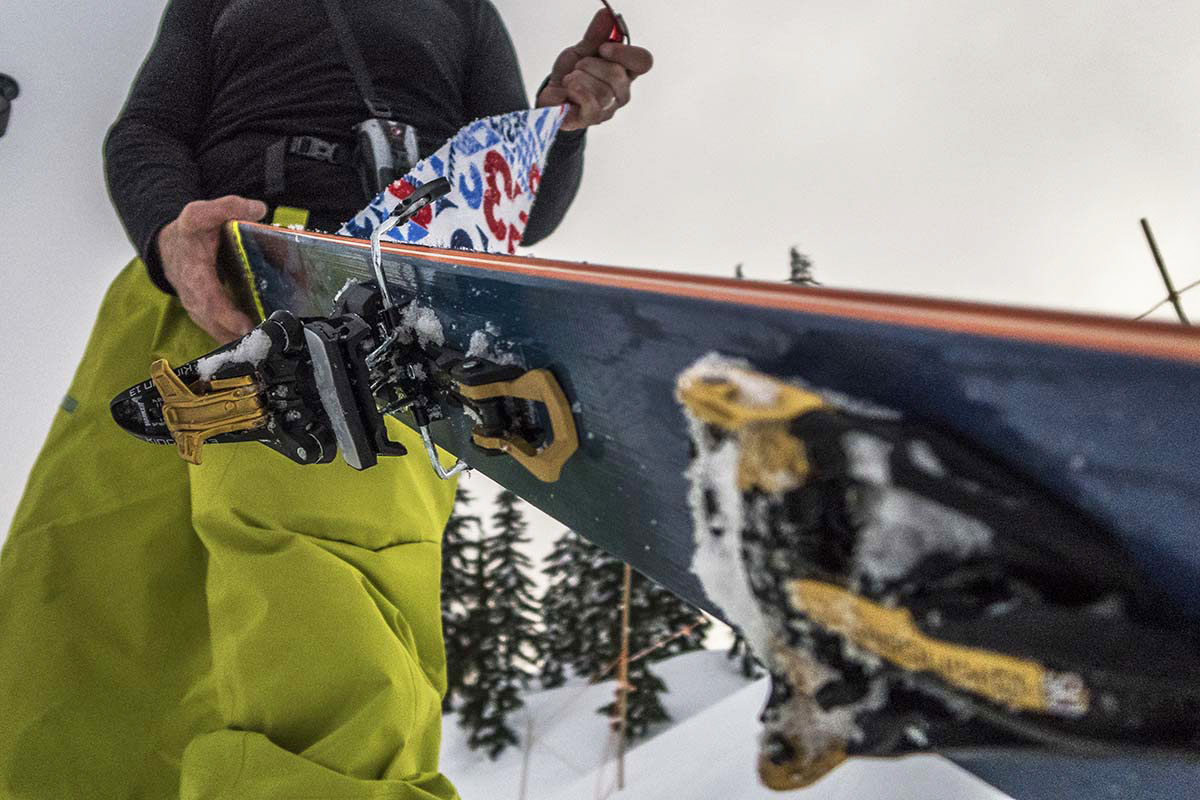
Frame Bindings Frame bindings are a crossover category that merge the design of an alpine (downhill) binding with the intention of a tech binding. As a result, you get many features standard to alpine bindings , such as official DIN certification, good downhill performance, and compatibility with most boots (including tech, touring, and alpine styles), along with the ability to detach the heel piece and head uphill. But the biggest selling point here is affordability, with price tags that amount to hundreds of dollars less than tech or hybrid designs.
The most notable compromise with frame bindings is uphill performance: They are very heavy (clocking in anywhere from 3.5 to almost 7 lb.), and the placement of their pivot point in front of your toe results in an unnatural stride and reduced efficiency on the skin track. With more capable tech and hybrid designs on the market than ever before, frame bindings are at risk of becoming obsolete and aren’t our first choice for most skiers. That said, if you’re on a strict budget or ski mostly inbounds, a frame binding could be the best option.
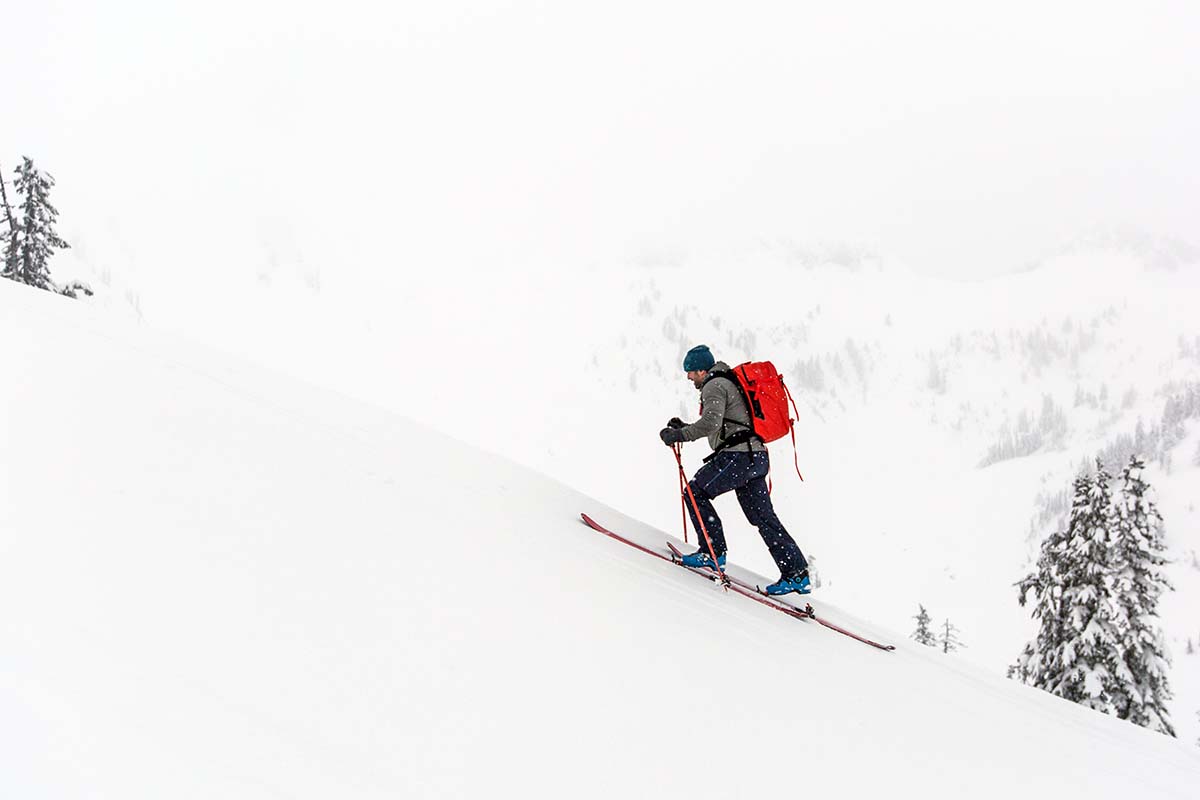
Hybrid Bindings Hybrid backcountry bindings are a relatively new category and defined by two key designs: the Salomon Shift and Marker Duke PT . Along with an alpine heel, these bindings feature an evolved toe piece that functions like a tech toe on the uphill but converts into a traditional downhill design in ski mode. This means a few things: For one, you get incredible downhill performance and safety with a fully locked-in toe, on par with a standard alpine binding (both the Salomon and Marker are TÜV-certified for DIN). Second, hybrid bindings are incredibly versatile in terms of boot sole compatibility: You can wear your tech boots to seek out remote powder stashes (a pin toe is required for uphill travel) or strap in your alpine boots for a day in the resort. They’re heavier than tech bindings (the Shift is almost 4 lb., while the Duke PT clocks in close to 6 lb.) but are the least compromised option for hard chargers or skiers who split their time between the front and backcountry and want to use the same setup in both environments.
If you’re a particularly large person and/or an aggressive skier, there’s one final option: the Cast Freetour Pivot . Available in 15- and 18-DIN variations, this binding takes the Look Pivot (a popular alpine binding) and adds a swappable tech toe piece for uphill travel. In other words, you get the security and power of a full-on alpine binding along with uphill touring capabilities. The Cast is largely overkill in weight, price, and overall construction for most riders, and the swappable toe pieces can take some time to get used to, but if you already own the Look Pivot or are looking for no-holds-barred security, it’s an intriguing and innovative solution.
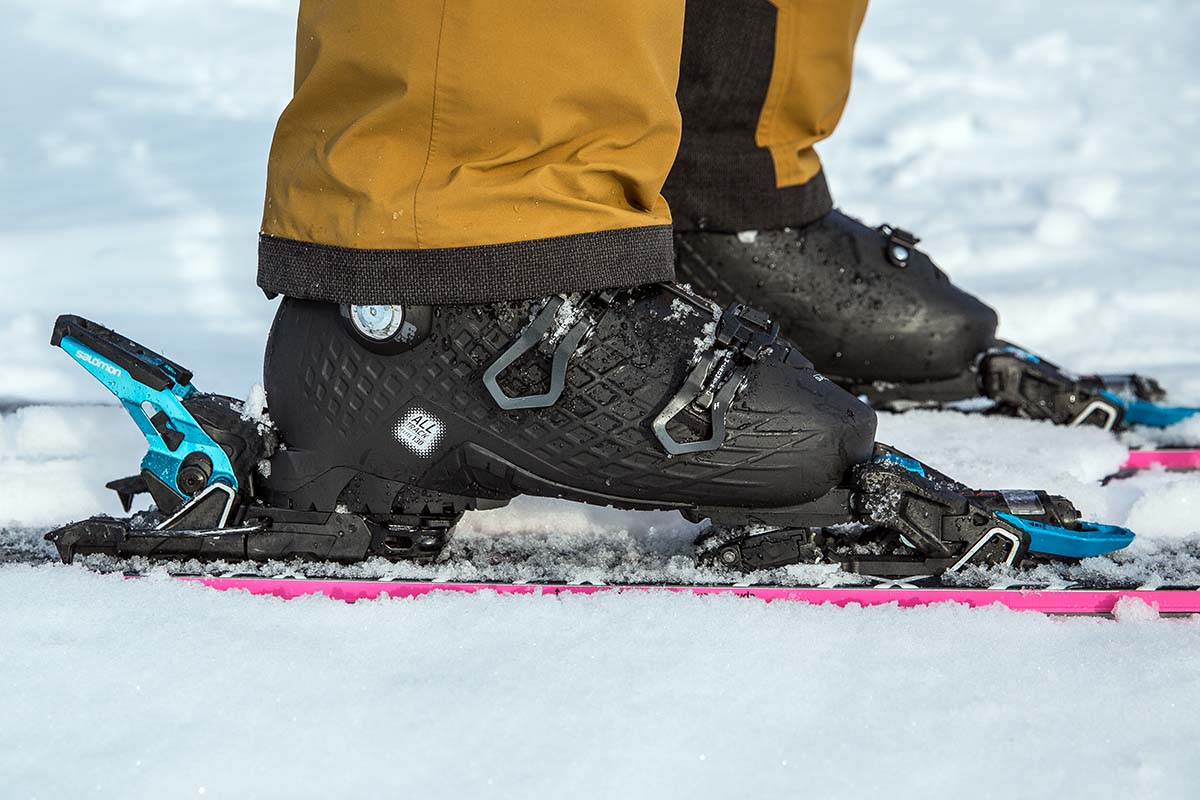
What’s Skimo?
A wildly popular activity in Europe, skimo has recently gained momentum in the U.S., thanks in part to its inclusion in the 2026 winter Olympics. In short, the sport includes both uphill and downhill racing on skis, with an emphasis on quick transitions between the two. Importantly, skimo and ski mountaineering are incredibly different activities—the former takes place in a controlled environment and generally implies racing; the latter involves traveling unsupported in big mountains, often for multiple days at a time. To illustrate the point, we know some skimo racers who don’t ski in the backcountry at all—rather, they use uphill resort travel as a way to maintain fitness and log vert during winter months.
The most important thing to note about skimo race bindings is that they’re designed specifically for competition and are not recommended for everyday ski touring or ski mountaineering. Skimo race bindings rarely have adjustable release values, and often include just one riser height (and often no flat setting). Historically, they have not included brakes or attachments for ski crampons, though that’s changing with a few models like Dynafit’s DNA (our top pick for skimo) and Low Tech Race 105, as well as Ski Trab’s Gara Titan (another popular race binding). Finally, most skimo bindings should only be used in conjunction with skimo race skis and boots—they’re simply not strong enough to drive wide skis or be driven by stiff boots.
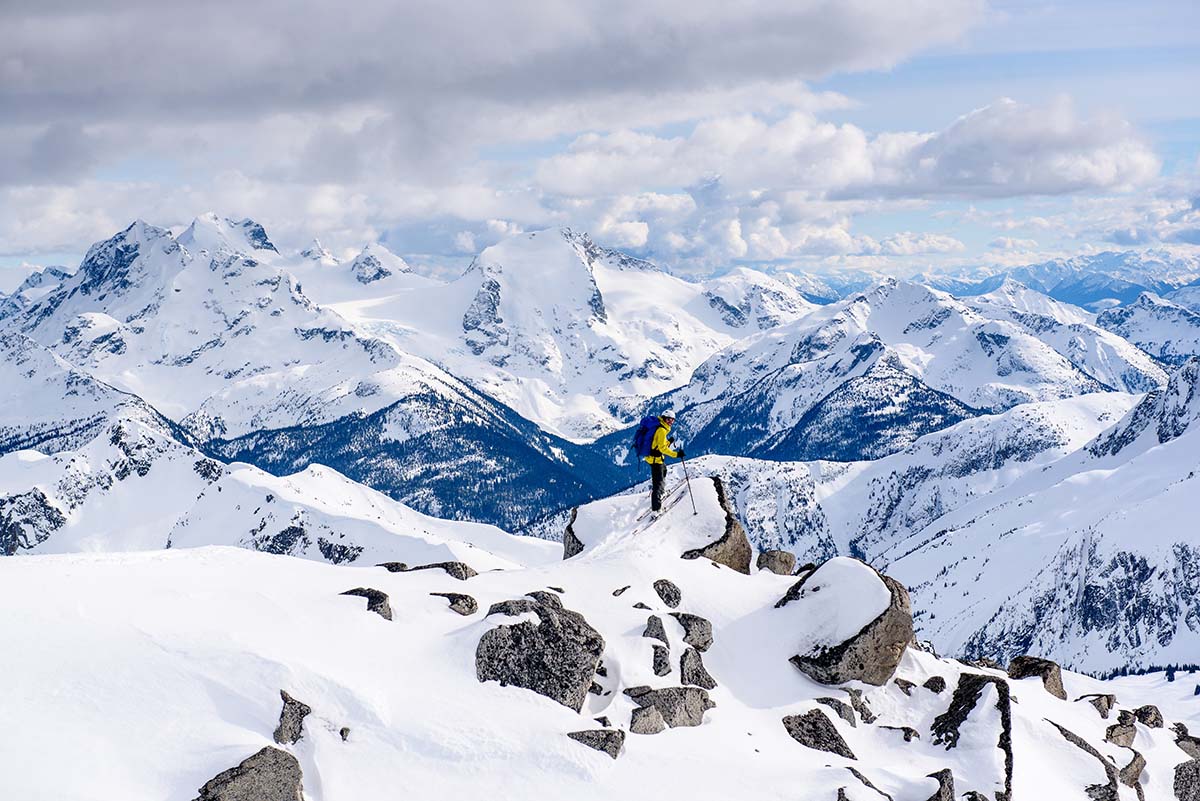
All backcountry skiers will benefit from a lightweight setup, but ski mountaineers, skimo racers, and fast-and-light enthusiasts in particular will want to minimize weight. Tech bindings are our preferred choice for this group because of their minimalist build: The picks here range from a scant 6.8 ounces for the Dynafit DNA skimo race binding to 3 pounds 2.4 ounces for the Marker Kingpin 13 . Within this category, expect the heavier models to have better retention and release features, higher performance on the downhill, and ease of use. On the other end of the spectrum, frame and hybrid types like the Marker Duke PT (5 lb. 15.2 oz.) are among the heaviest options, but they also offer the best downhill performance, are versatile with a range of ski boots, and excel for skiers who spend most of their time inbounds. In the end, deciding how much weight you're willing to shuttle underfoot will depend on a variety of factors, including your ski objectives, how much durability you need, what boots you plan to wear with your bindings, and more.
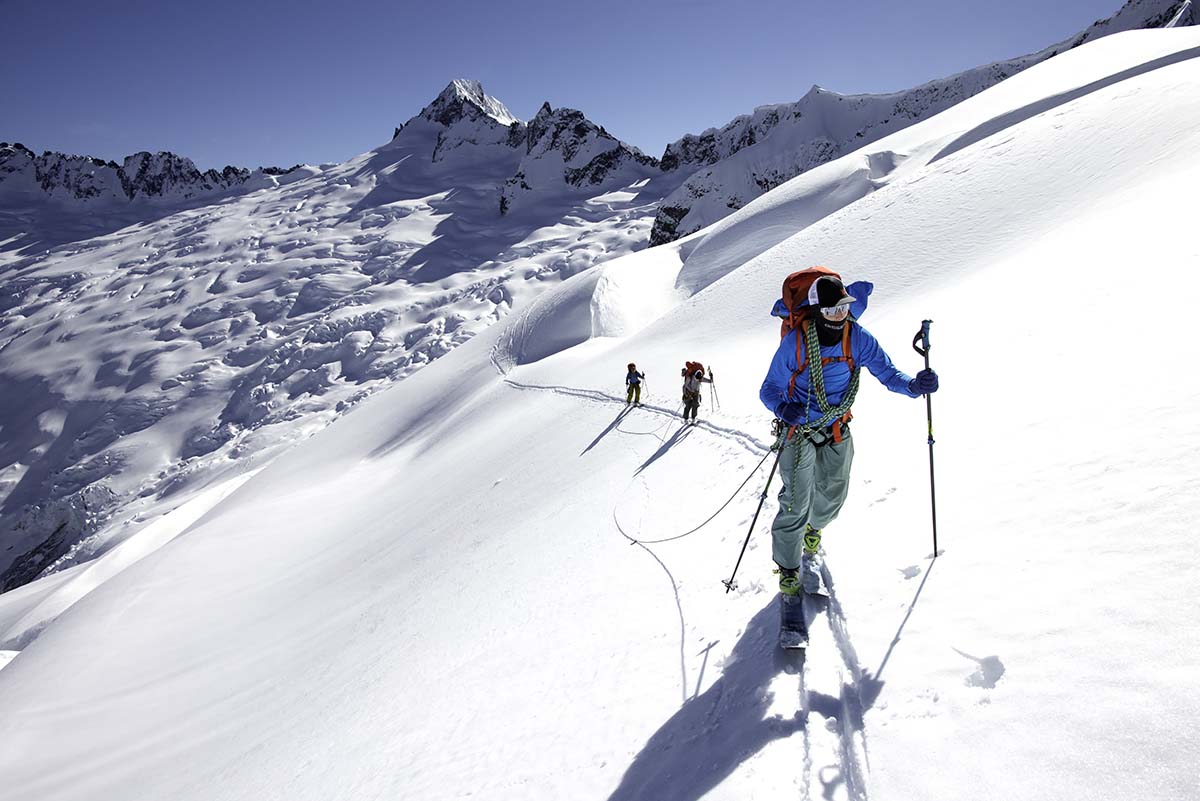
Release Values and TÜV-Certified DIN
Each binding on our list comes with a manufacturer-specified release value (usually a range of values), which provides an idea of the amount of force that must be exerted on the binding before it releases your boot. The numbers generally range from 1 to 18, and the higher you go, the longer the binding will keep you locked in. Lighter and less aggressive skiers typically set lower release values, while heavier and powerful skiers will dial it in higher. Understandably, this is a very important number to get right, as a binding that releases either prematurely or too late can have pretty serious safety ramifications—not to mention impact performance.
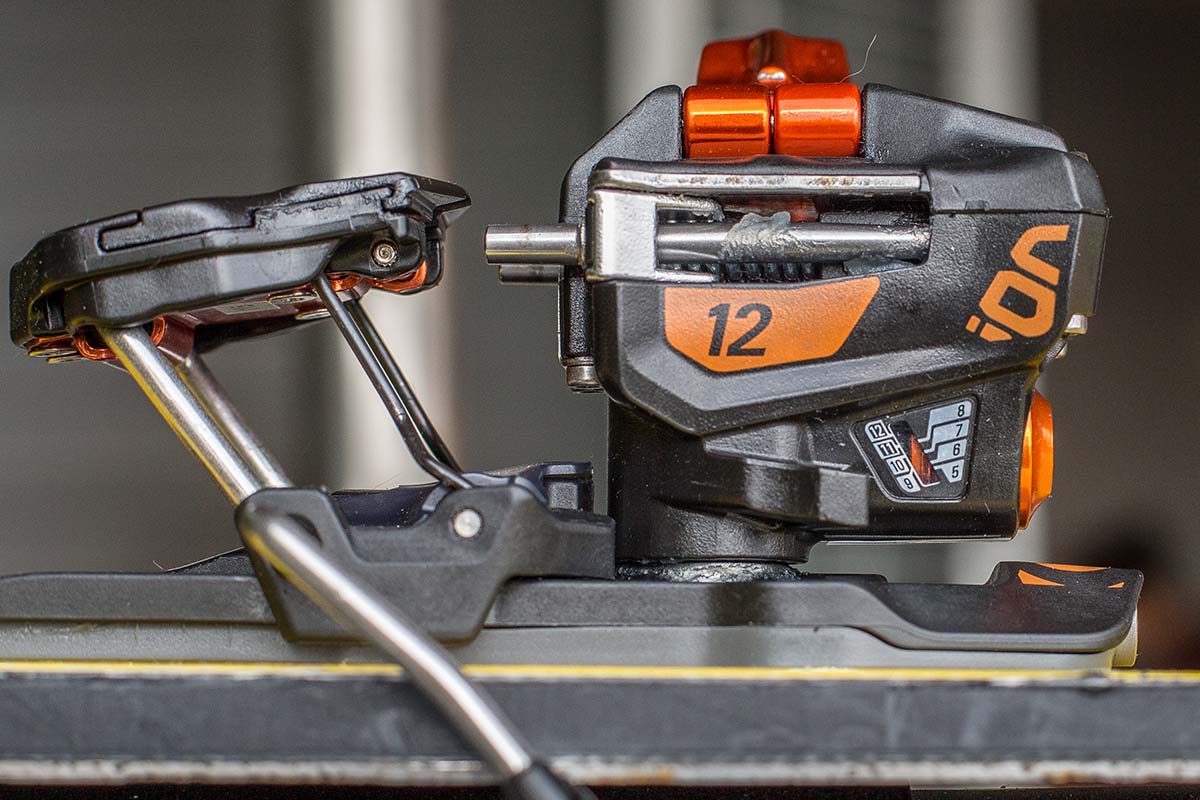
Within the alpine skiing world, release value is referred to as DIN (short for Deutsches Institut für Normung) and is measured via a standardized test administered by the TÜV (an international testing group based in Europe). When a binding meets all the requirements laid out by the DIN ISO 13992 specification, it is often referred to as TÜV certified.
While all the hybrid and frame bindings here are TÜV-certified, tech styles are essentially the Wild West with just a few exceptions (namely, the Dynafit ST Rotation and Marker Kingpin). The reason for this is their unique toe and heel pieces, which prioritize durability, lightness, and strength over safety features like elasticity and release mechanisms. While alpine bindings release laterally at the toe, most tech bindings feature a fixed toe and release at the heel instead, which has been attributed to an increase in the risk of leg injuries. In other words, if safety is a priority, it’s not a bad idea to opt for a TÜV-certified binding like the aforementioned Rotation and Kingpin (the Fritschi Tecton also features a lateral toe release) or bump up to a hybrid binding like the Salomon Shift.
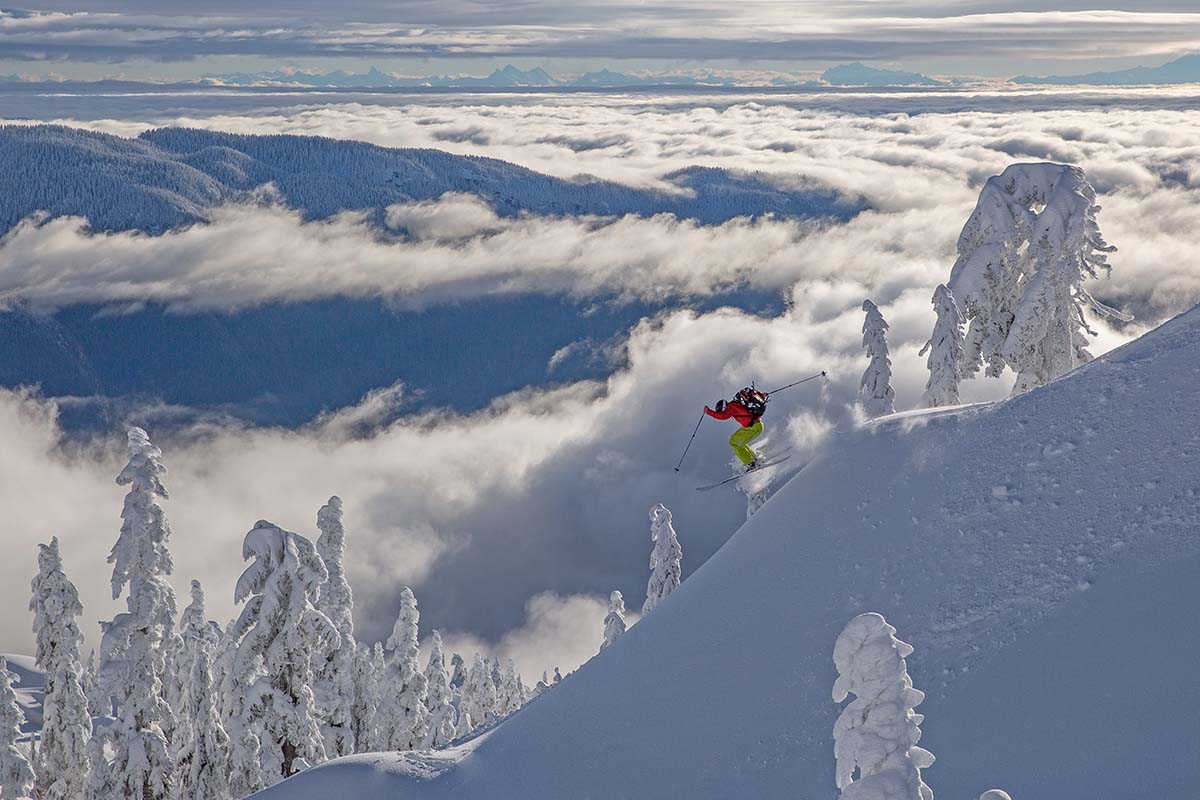
Whether you’re skiing at a resort or in the backcountry, it’s a good idea to use either a brake or a leash to keep your skis from going far if they detach from your boot. Most hybrid and frame styles come with built-in brakes, but tech styles often give you the option for leashes instead. On one hand, leashes are lighter and keep your skis much closer to you (brakes don’t always bite on icy terrain). On the other hand, brakes make it easier to step into your ski boot by holding your ski in place and don’t require you to bend over and attach them like a leash does. In our opinion, brakes are the most user-friendly solution for the majority of skiers, but we understand the appeal of leashes, especially for those focused on minimizing weight. If you opt for the latter, the B&D Ski Leash is our favorite: It features a coiled cord that stretches so that you can transition without unclipping and breaks under a certain force (you choose between 40 and 60 lb.), which is a nice safety measure in the event of a serious fall.
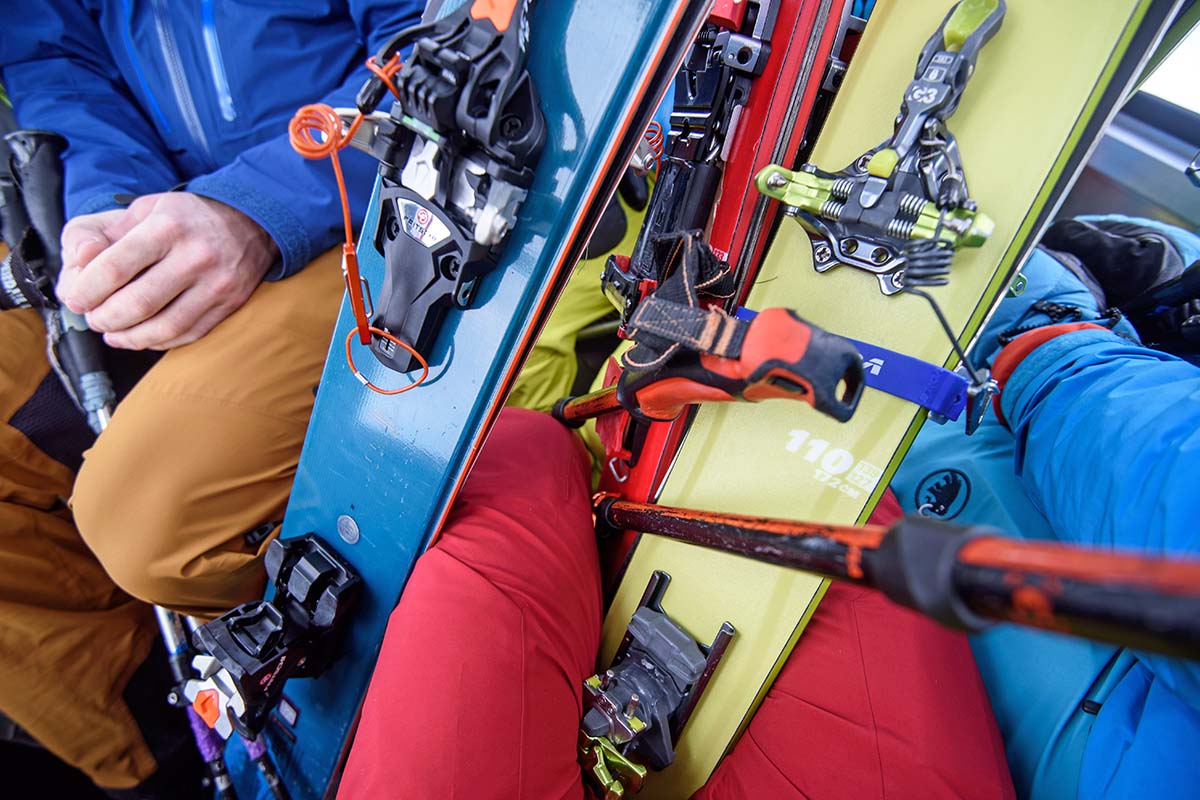
Brake Width If you opt for brakes, you’ll likely have your pick between a variety of widths. It’s a good idea to get a width that closely matches the waist width of your touring skis —part of the reason it’s always a good idea to select your skis prior to picking a binding. The typical recommendation is to choose a width that is no more than 10 to 15 millimeters wider than your ski's waist, and not slimmer than a few millimeters (a ski shop can bend the bars ever so slightly). Be sure to avoid buying a brake that is too wide, as it can drag when you’re carving on hardpack.
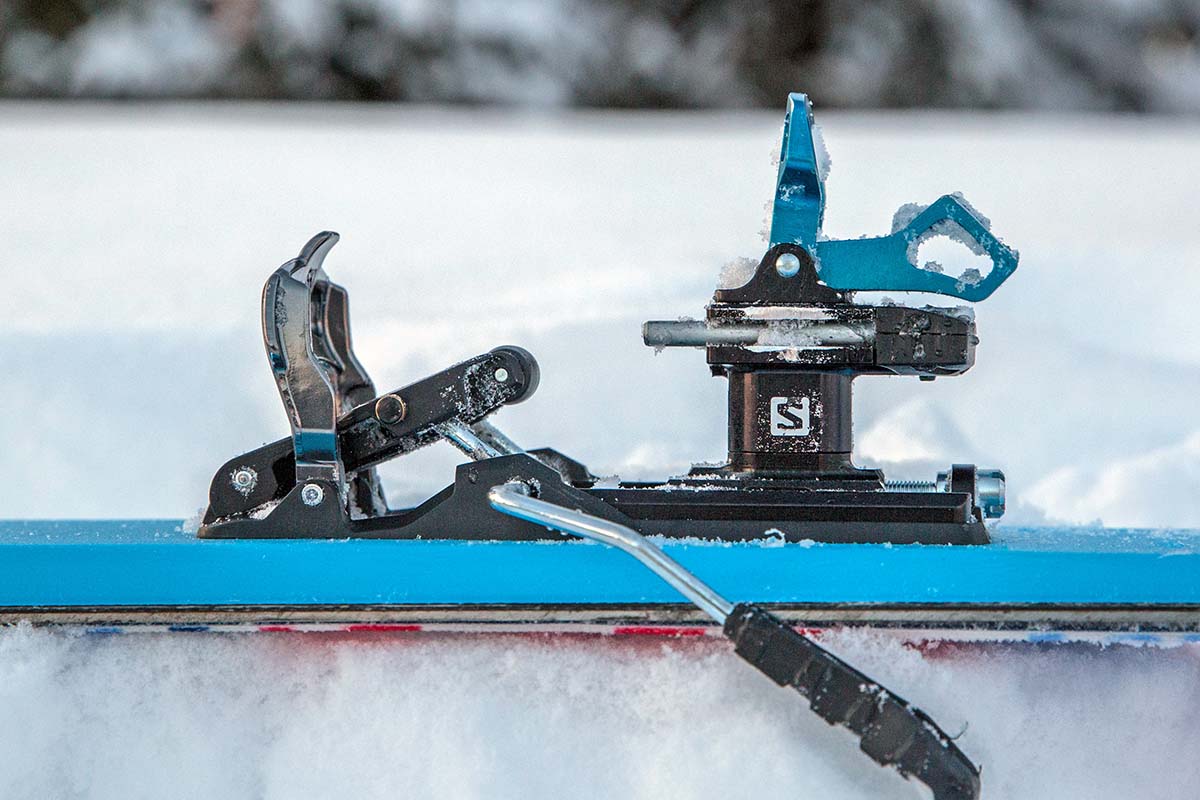
Heel risers—also known as heel lifts—help reduce strain on your calf muscles and Achilles tendon on steep terrain by elevating your heel and decreasing the range of motion required from your foot and ankle. They can also make it easier to break trail in deep powder by keeping the tips of your skis up. Designs vary between brands and models, but most risers comprise small metal tabs on the binding's heel piece that you can flip into place with a ski pole. On average, the majority of touring bindings have three riser levels: flat (no lift engaged), mid-rise, and high rise.
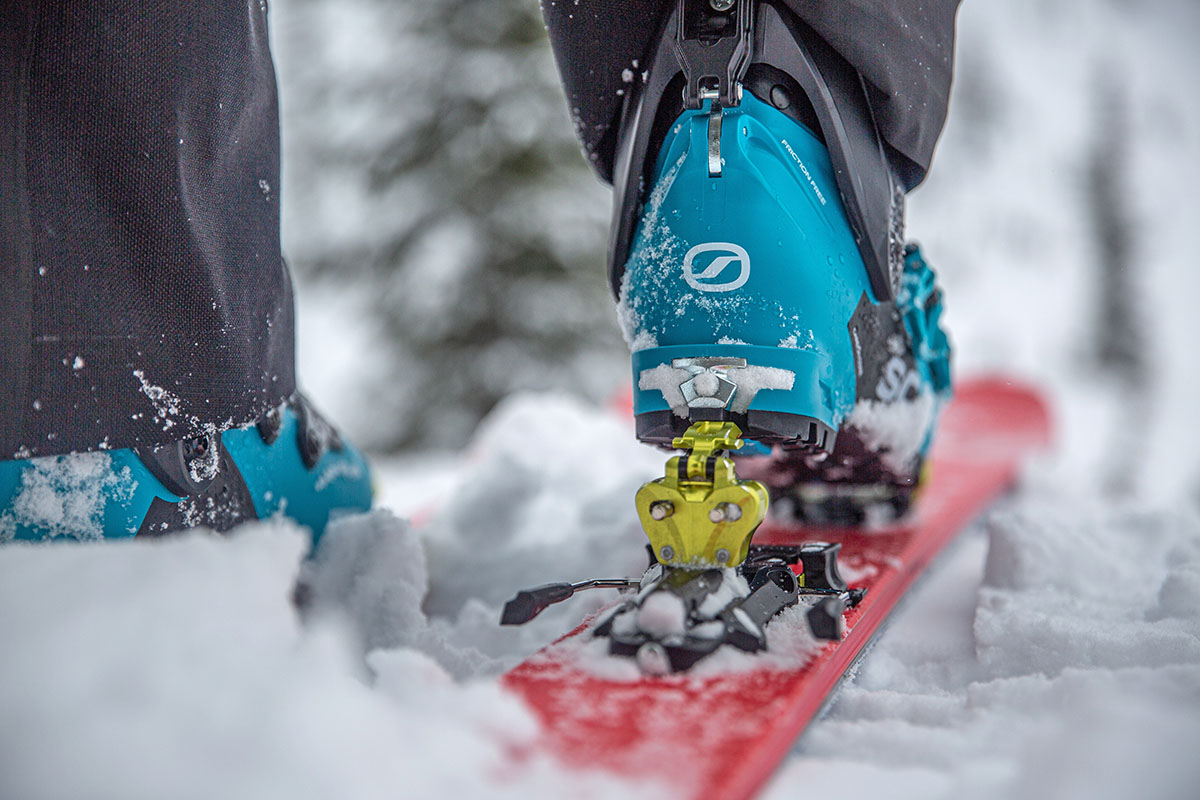
When you’re skinning across a flat meadow, ideally you’ll be in “flat” mode (not using a riser at all), and your movement will look very similar to classic cross-country skiing. By gliding across flat surfaces, you’re able to cover more distance with fewer steps and minimal effort. However, a big part of backcountry skiing is going uphill. As you ascend moderately steep terrain, engaging the lowest heel riser will lessen the strain on your lower legs and help you maintain an upright and efficient body position (i.e., not leaning forward at the waist). As you get into very steep terrain, using the high-rise position on your heel riser will accomplish the same goal. Importantly, using risers when you don’t need them will shorten your stride and tip your balance forward (like walking in high heels), so a good rule of thumb is to adjust your risers to what feels most natural given the slope angle—and reassess as that changes.
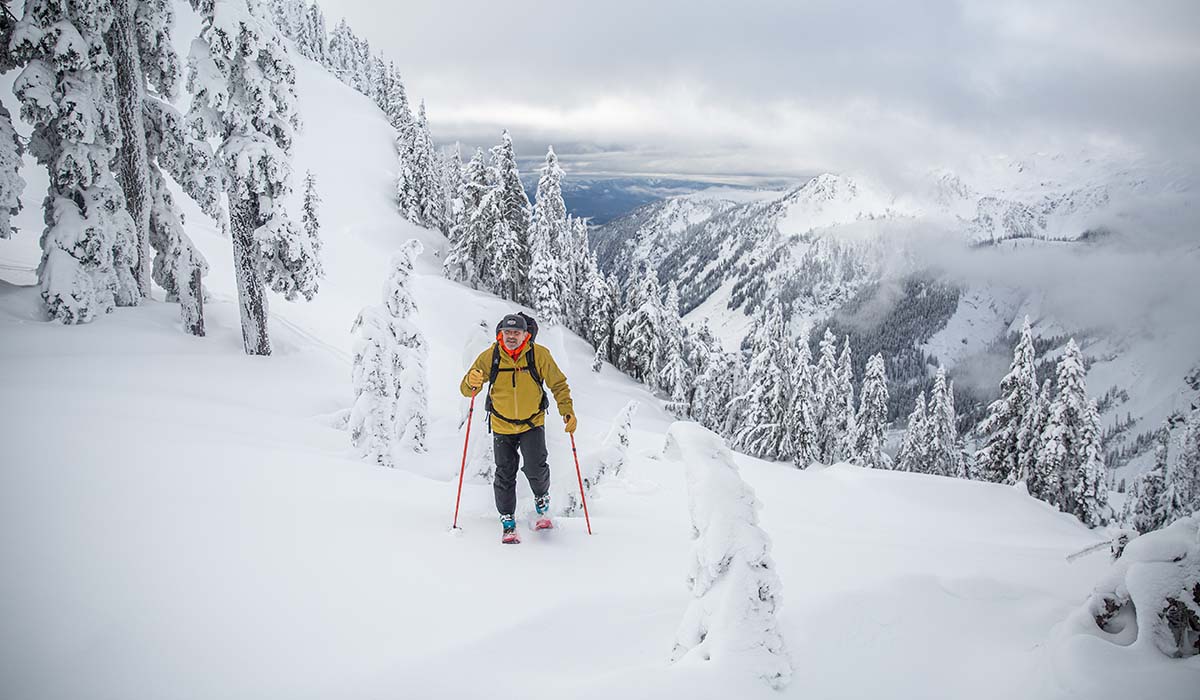
Ski Crampons Another common climbing tool is the ski crampon. Almost all backcountry ski and splitboard bindings have a small tubular slot on the toe piece for attaching a ski crampon. Ski crampons have sharp edges that bite into firm snow as you step down with the ball of your foot. They’re an essential piece of gear for ski mountaineering and springtime volcano skiing in the Pacific Northwest, when you’re likely to start the day on very hard, frozen snow and descend on sun-softened corn. Note: If you’re using ski crampons, you can’t use your binding’s heel riser(s), as you’ll need to be able to flatten your foot against the ski in order to push the crampon into the icy snow surface.
Backcountry bindings are fairly complex pieces of gear, and you’re bound to face some sort of learning curve no matter which design you choose. In general, we’ve found that frame bindings are the easiest to use, while tech and hybrid styles have more moving parts, especially during transitions. For us, a user-friendly binding is one that rotates quickly (ideally, with just the twist of our ski pole ), offers a convenient transition from tour to ski mode without detaching from the boot, and uses risers to alternate between climbing modes (rather than rotations). And some subtler features can go a long way toward increasing efficiency, including easy-to-grab heel pieces that only require 90-degree rotation (we like taller and more rectangular shapes), climbing risers that toggle with your pole’s basket or grip, and rubberized components like the toe lever on the G3 Ion 12 .
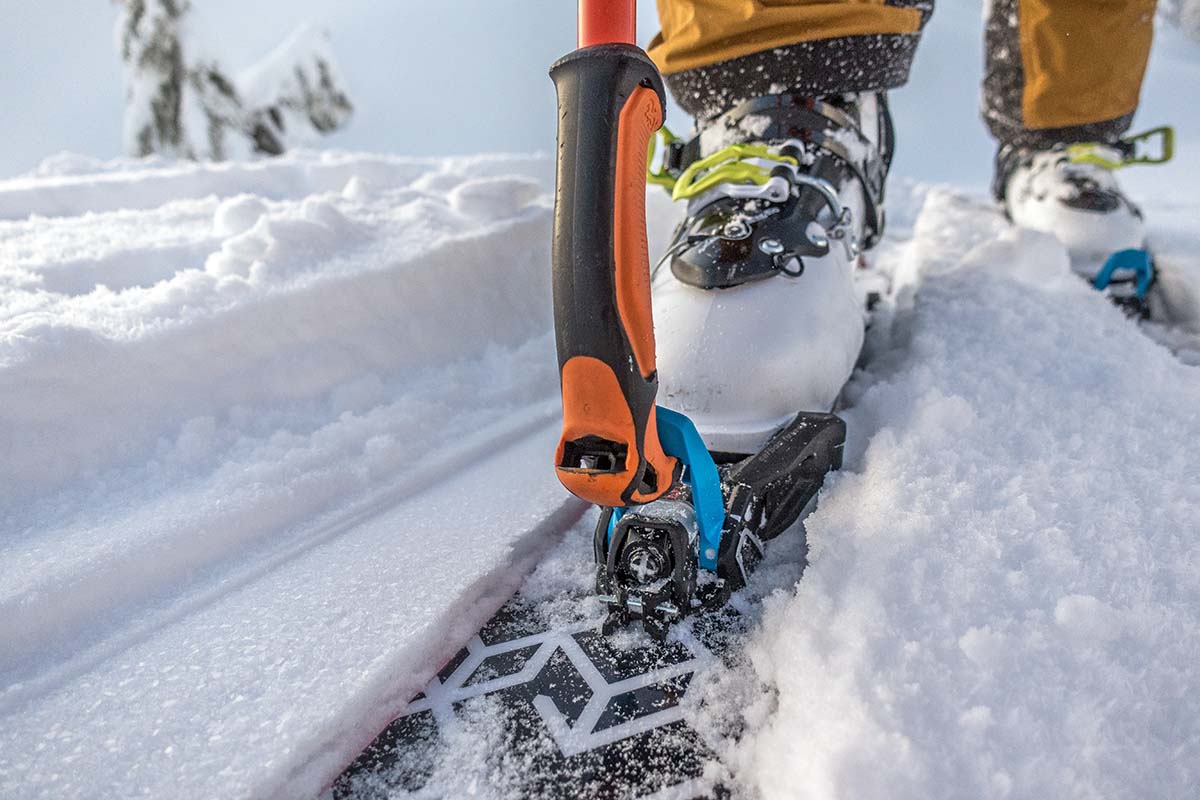
More than most gear, backcountry bindings truly take a beating, especially if you like to ski hard or venture deep into the mountains. We ask a lot from these devices, and most of the time, they hold up impressively well (although if you’re a ski mountaineer, it’s likely you have a story of your binding breaking at the least optimal time). Most tech bindings are made with predominantly metal parts, including aircraft-grade aluminum, titanium, and carbon, but we also see a lot of high-tech synthetic materials, especially in the hybrid and frame categories. While an all-metal design is certainly robust and confidence-inspiring (ATK prides itself on this), we’ve found the durability of bindings with plastic components to be almost equally as impressive (and plastic can help shave weight and cost, too).
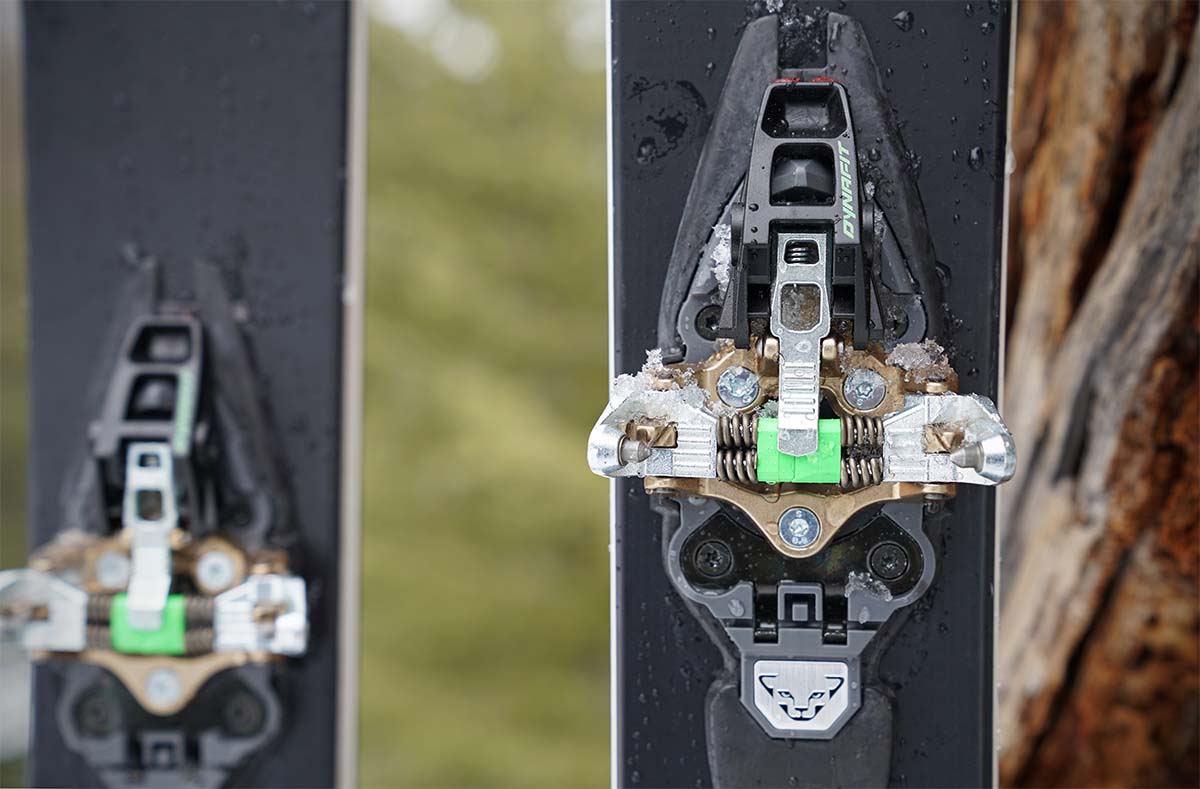
More than the quality and type of materials (metal vs. synthetics), it’s important to consider the quantity—that is, the weight of your binding. In other words, you’ll want to ski your binding well within its limits in order to maximize its lifespan (and importantly, take care to match it with an appropriate ski). We dive deeper into this in the next two sections below.
Ski boot compatibility is a big topic in the alpine binding world, and it's arguably even more consequential for backcountry bindings. However, the good news is that it's fairly easy to break down. Starting with tech bindings, which comprise the majority of the options on our list, you get compatibility only with boots with tech fittings at the toe, which come standard on most modern touring boots. In terms of the boot sole, tech bindings typically work with designs that have ISO 9523 soles or non-compliant soles (often found on streamlined, lightweight models).
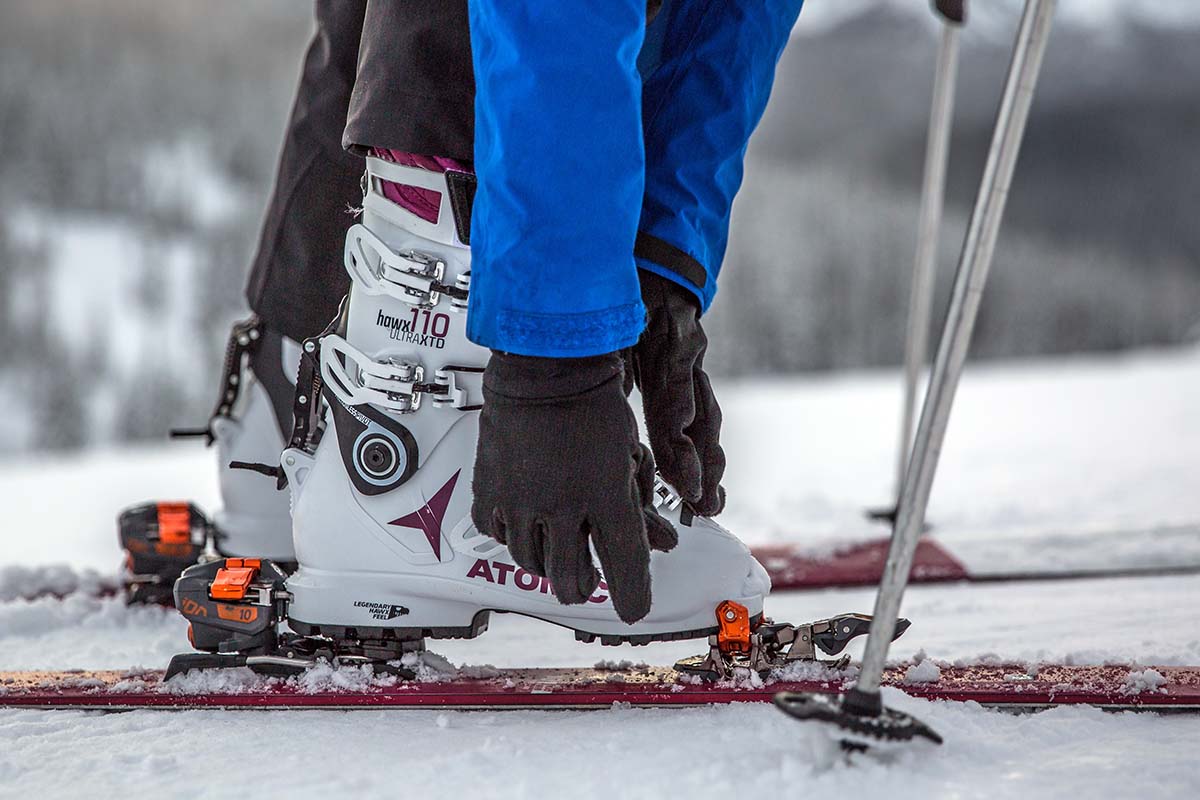
Frame bindings and multi-norm hybrid bindings like the Salomon Shift or Marker Duke PT are a different story: With these styles, you can ski a very wide range of boot types. These include most tech boots, crossover downhill/backcountry designs that have GripWalk and Walk to Ride soles, and standard alpine boots that do not have tech fittings (ISO 5355 Alpine). The benefit to this versatility is huge for skiers who want to ski one pair of skis with two separate boots—you can throw down on groomers in your stiff resort boots and strap on your light and flexy backcountry boots for the skin track. Of course, you’ll want to check the details for each binding before you commit to purchasing, as there are always exceptions to the rule (for example, the Salomon Shift does not accommodate a tech boot like the now-discontinued Dynafit Hoji Pro Tour due to its shortened heel and toe lugs).
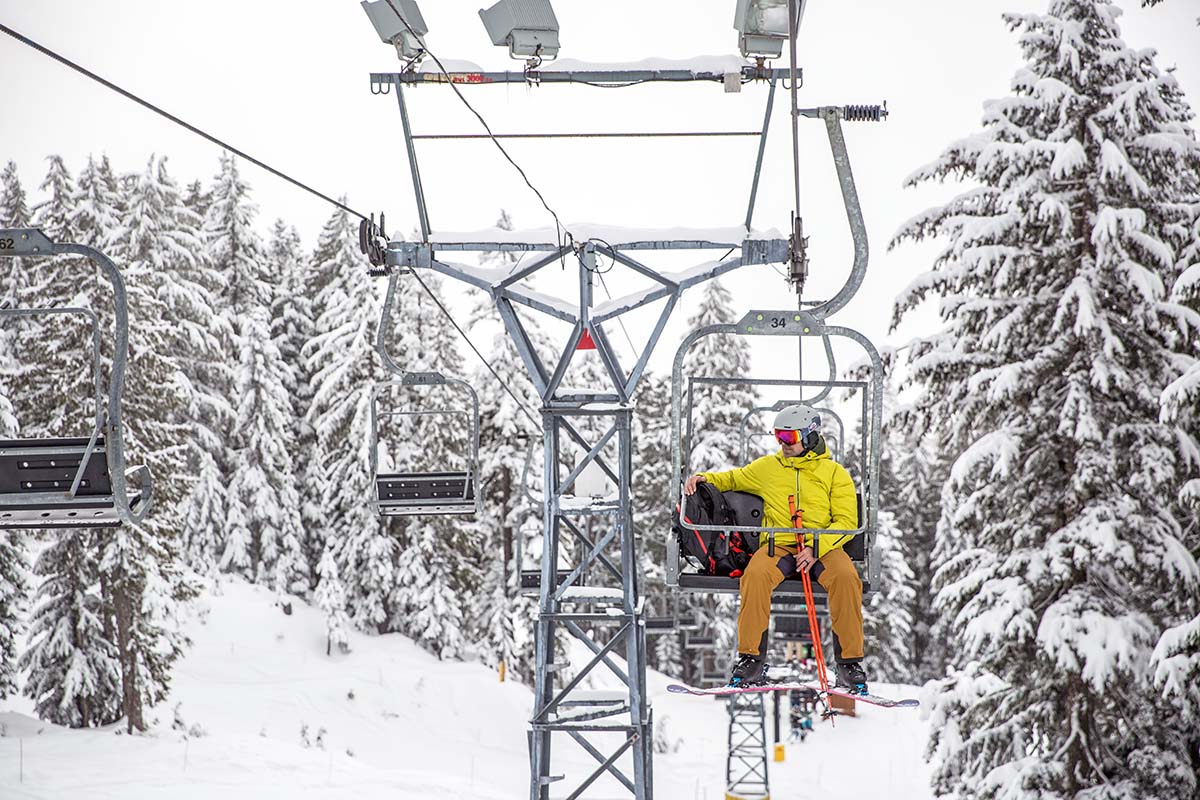
Ski gear works best as an integrated system, so it's a good idea to research your skis, boots, and bindings all at once. Outside of the basic compatibility issues between boots and bindings that we touched on above, it’s important to ensure all parts complement one another. Put another way, don’t throw an ultralight tech binding on a heavy powder ski—it’s just a waste of a lot of cool technology (and cash). And the same goes with some of the heavier and more downhill-capable bindings here: We recommend avoiding an ultralight touring ski that isn't powerful or stable enough for carving. To help in the process, see our top picks for backcountry skis .
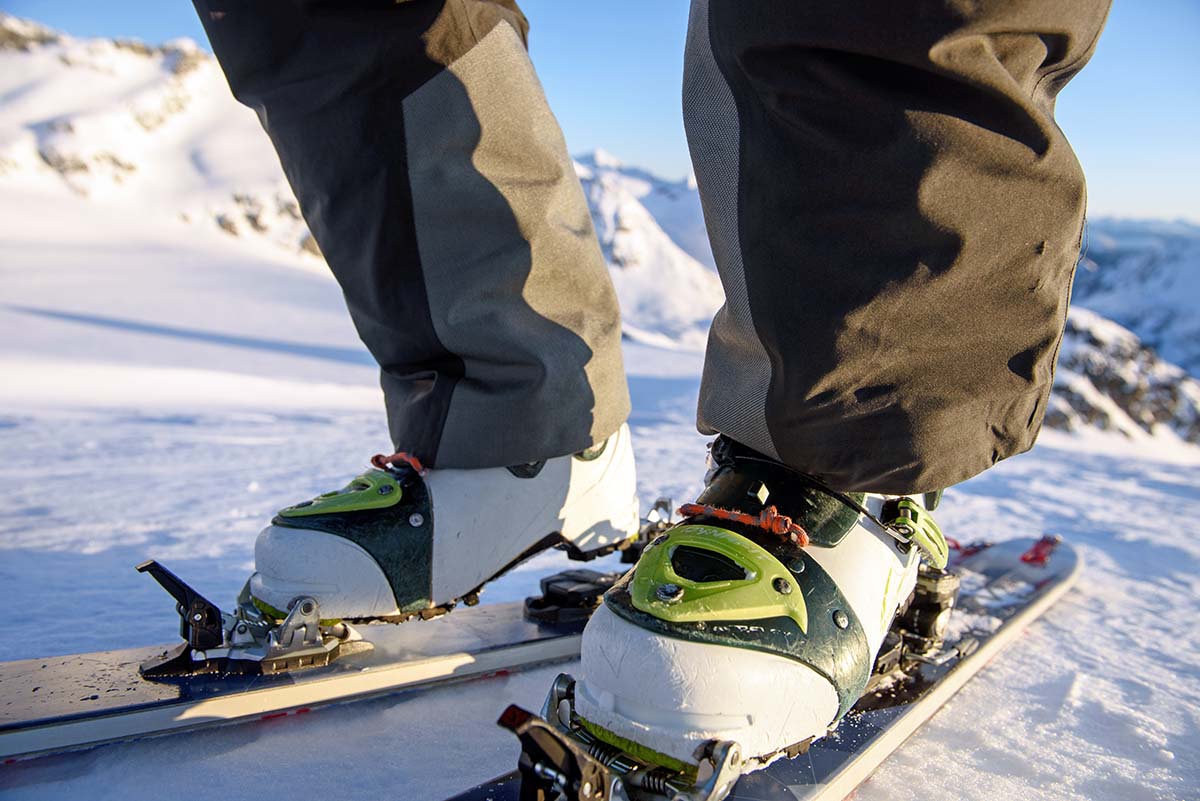
When ordering skis and bindings online, it’s important to know that the bindings will not arrive mounted (unless you specifically buy them mounted together). If you have a local ski shop or order from a retailer like REI, it’s as simple as paying to get the bindings mounted on the skis (you'll need to bring your boots along, too). The typical cost is around $40 to $70, but REI will do the work for $25 if you purchase from them (this was the price at the REI flagship in Seattle last season, but it does vary by store). It's worth noting that there are some pretty good DIY mounting tutorials online, but given the safety element and risk (you'll be drilling into your own pricey skis), we think it's well worth having a professional technician do the job. Back to Our Top Backcountry Binding Picks Back to Our Backcountry Binding Comparison Table
Learn More About Backcountry Skiing
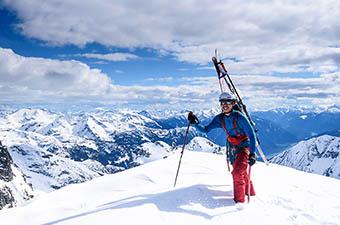
Best Backcountry (Touring) Skis of 2024
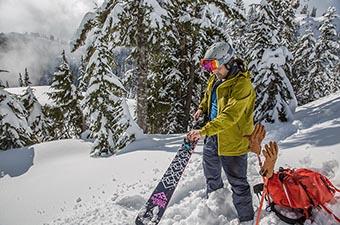
Salomon S/Lab Shift MNC Binding Review
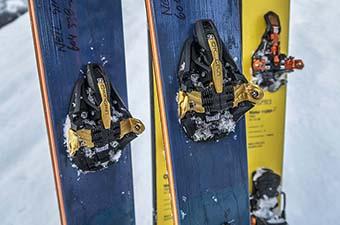
Backcountry Ski Bindings: Tech vs. Frame
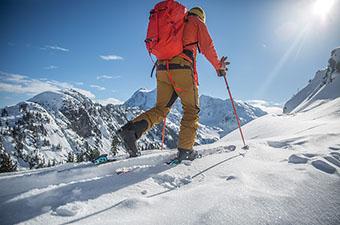
Best Backcountry (Touring) Ski Boots of 2024
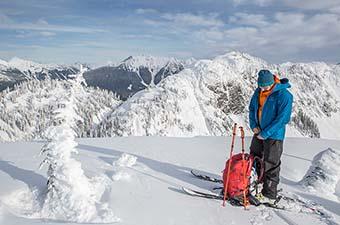
How to Layer for Backcountry Skiing
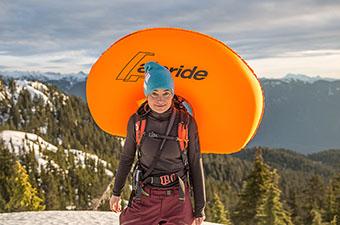
Best Avalanche Airbag Packs of 2024
Best Avalanche Beacons of 2024
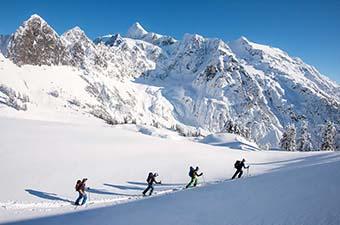

Backcountry Skiing Checklist for 2023
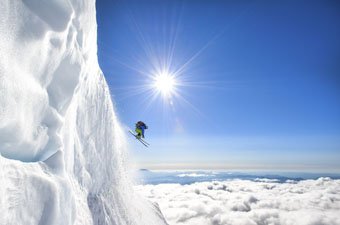
Jason Hummel: An Alpine State of Mind

Mobile Menu
Megamenu - desktop hamburger menu.
- Hiking Gear
- Backpacking Gear
- Biking Gear
- Camping Gear
- Footwear Reviews
- Climbing Gear
- Skiing Gear
- Winter Gear Reviews
- In-Depth Gear Reviews
- Hiking Shoes
- Hiking Boots
- Trail Running Shoes
- Mountain Bike Shoes
- Approach Shoes
- Climbing Shoes
- Beginner Climbing Shoes
- Mountaineering Boots
- Winter Boots
- Rain Jackets
- Down Jackets
- Synthetic Jackets
- Fleece Jackets
- Hardshell Jackets
- Softshell Jackets
- Windbreaker Jackets
- Ski Jackets
- Winter Jackets
- Hiking Pants
- Hiking Socks
- Trekking Poles
- Baby Carriers
- Running Vests
- Backpacking Tents
- Backpacking Packs
- Backpacking Sleeping Bags
- Backpacking Sleeping Pads
- Backpacking Stoves
- Backpacking Food
- Water Filters
- Altimeter Watches
- Handheld GPS
- Mountain Bike Helmets
- Mountain Bikes
- Mountain Bikes Under $1,000
- Mountain Bikes Under $2,000
- Gravel Bikes
- Bike Brands
- Kids' Bikes
- Hitch Bike Racks
- Camping Tents
- Rooftop Tents
- Camping Sleeping Bags
- Camping Mattresses
- Camping Chairs
- Camping Stoves
- Duffel Bags
- Rock Climbing Shoes
- Climbing Helmets
- Climbing Harnesses
- Climbing Quickdraws
- Belay Devices
- Climbing Ropes
- Climbing Backpacks
- Winter Gloves
- 4-Season Tents
- Ski Helmets
- Ski Goggles
- Ski Backpacks
- All-Mountain Skis
- Ski Bindings
- Backcountry Skis
- Backcountry Ski Boots
- Skis for Beginners
- Hardpack Skis
- Mirrorless Cameras
- Full-Frame Cameras
- DSLR Cameras
- Point-and-Shoot Cameras
- Travel Cameras
- DSLR Lenses
- Mirrorless Lenses
- Lofoten Islands
- Lofoten Hiking
- Hardangervidda
- Jotunheimen
- 10 Great Norway Hikes
- Public Huts
- Torres del Paine
- Chalten and Glaciares
- Lake District
- Patagonia National Park
- Milford Sound
- Abel Tasman
- Marlborough
- Great Walks
- Adventure Towns
Add adventure to your inbox
- Privacy Policy
- Terms of Use
© 2024 Switchback Travel. All Rights Reserved. No part of this site may be reproduced without our written permission.
Don't have an account? Join Now
Forgot Password
Please enter your public display name and a secure password.
Plan to post in the forums? Change your default forum handle here!
Marker Tour Binding Review

Years ago, the Marker Duke binding – an absurdly burly downhill binding modeled off the Marker Jester that also had a touring mode – was the first in a wave of new products aimed simultaneously at the hard-charging skier who’d been wary of the weakness of existing ski touring bindings and the first-time backcountry skier who was stepping out of the resort for the first time but who still expected to spend most of their year riding the lifts. It was the first salvo into a new market that has seen most of the growth in ski products of late, in that vast in-between space between regular resort riding and weight-weeny skinny-ski uphill-focused backcountry skiing.
Years later, a vaster array of products has filled all kinds of niches within that big gap, and the Marker Tour F12 is one of them. The Tour is basic the Duke except 30% lighter, with a lot of that weight savings coming in a less burly-looking and much lighter plastic heel piece, and a less-aggressive window of DIN settings – from 4-12 – compared to the Duke’s knee-destroying maximum crankdown rating of 16.
But the majority of skiers, like all those people that don’t jump forty foot cliffs on the regular, will be well-served for both their resort and backcountry skiing with the Tour while actually having a light enough building that they’ll want to go for a skin more than once or twice a season. At 5’10” and 165 pounds, I’ve had the Tour mounted to my Moment Deathwishes for the past two seasons and have skied everything from park to powder to bumps and crud, along with plenty of smaller hucks, with very few issues.
The Duke’s weight makes touring such a damn slog you’d be hard-pressed to do it on any consistent basis, and will instead be stuck back at the resort with a really heavy binding. The same thing could be said for the Salomon Gaurdian, which although beautifully designed and with a lower stack height (the distance your boot is from the ski when you’re locked into the binding) and the ability to disengage the touring mode without having to take your skis off, is still a pain in the neck in terms of weight.
The Tour, at 1018 grams a binding, is right around the same weight as another legendary touring binding, the Fritschi Freeride Pro. But the Tour has the advantage of a slightly lower stack height (36 versus 39 mm) and noticeably better downhill performance. The squarer and wider Tour transfers energy to your edges much more effectively, especially for today’s wider powder skis, and for those new to touring, there is some piece of mind in having a binding that looks more like the traditional alpine binding you’d be skiing previously. The only disadvantage is that you have to take your ski off completely in order to switch from touring to skiing – a burden in deep pow or if you’re trying to bang out laps as fast as possible. But most entry-level backcountry skiers will rarely get in more than a lap or two per outing, so it won’t strike them as as much of a burden. Marker also defends the move as a safety concern in order to negate worries about the binding being in tour mode when you think you’re good to drop in.
Touring uphill on the Markers is fairly straightforward. The Tour offers a metal climbing bar underneath the heel that can be easily dropped down or flicked up with the end of a ski pole grip, and which offers 9 and 13 degree modes depending on how steep your skin track is. One of the many small improvements Marker has made since first introducing the Duke has been to add plastic wraps for the climbing bars, reducing the amount of noisy clacking that used to occur when they were all metal. If you’re climbing up the side of a hill with a well-worn skin track that has a bit of side angle to it, there is some noticeable flexing that the Tour’s lighter materials exhibit, but once the heel is locked down it’s no longer an issue and doesn’t ever seem to happen when you’re skiing downhill.
Marker’s touring bindings have also gotten better at shedding snow from little crevasses within them that used to frequently build up with snow and ice, partly by redesigning parts of the binding and, under the toepiece, adding a length of Teflon that keeps snow from sticking. Folks with wetter snow may have the occasional issue, but as long as you smack the binding against the ski a few times at the top, I’ve had slim to no issues with snow and ice buildup. The Tour’s ski/tour lever also has a handy strap on the end of it that makes switching the binding over to ski mode while in gloves a lot easier.
So who should buy the Tour? If you’re considering your first ski touring binding, aren’t willing to cough up the dough for a superlight Dynafit-style binding, and aren’t planning on maching down lines at 80 miles an hour or off monster cliffs, this binding will let you ski the resort comfortably while having a light enough binding that you might actually enjoy touring on a semi-regular basis. The Duke and other similarly burly bindings will be overkill for all but the most hardcore shredders, and will just add to the misery on the hike up.
Who should buy the Tour? If you really become addicted to the idea of being able to harvest fresh powder just by going for a walk, you’ll eventually start to value the weight of your equipment a lot more than you do now, and will likely gravitate towards a tech binding made by Dynafit or a similar competitor, which weigh at least half as much as the Tour and will make a noticeable difference in the speed at which you can walk up big mountains covered in snow. But for your first foray into the world of skinning up mountains in order to ski back down them, the Tour stands out in its ability to occupy a middle ground between everyday skiability and weight concerns on the way up.
The Tour comes in F10 and F12 models and two length sizes; the small accommodates 265-325 mm boots (roughly a 22.5-28.5 boots), while the large accommodates big boy boots longer than 325 mm. It should be noted that we tested the 2013 model; the 2014 Tour F12 has a wider frame that should drive bigger skis better. The Tour F12 retails for around $430.
About The Author
stash member Ryan Dunfee
Former Managing Editor at Teton Gravity Research, current Senior Contributor, current professional hippy at the Sierra Club, and avid weekend recreationalist.
Connect with TGR:
Get tgr email updates:, we proudly support:.
Teton Gravity Research © 2024 All rights reserved. | Terms of Use & Privacy Policy | Partner of USATODAY Lifestyle/Action Sports
- Powder Finder
- Ski resorts near me
- Switzerland
- Ski touring
- Snow Report
- Ski Bindings
Marker Tour F10

Top 10 ski resorts
- Wilder Kaiser
- Whistler Blackcomb
- Val Thorens
- Serfaus-Fiss-Ladis
Top 10 ski destinations
- Czech Republic
- Ski resorts
Subscribe to our Newsletter
Information.
- Privacy policy
- Content policy
- Fixations de ski
Test Marker Tour F10 2021
- Modèle 2022
- Modèle 2021
- Modèle 2020
- Modèle 2019
- Modèle 2018
- Modèle 2017
9 tests Marker Tour F10.

Il y a du Freerando dans l'air !
Points forts, points faibles, bonjour à tous,.
Nouveau test et cette fois je suis super content de vous proposer celui-ci car après des mois de réflexion, j'ai fais l'acquisition des fixations Marker F10 Tour modèle 2021 en noir et blanc.
Comme d'habitude je vais vous expliquer pourquoi ces fixations, sur quoi je les utilisent et mon ressentis.
Alors pourquoi j'ai choisis ces fixations ?
Il est important de préciser que la montagne ça coûte cher et quand on est passionné avec un budget serré on se doit de faire quelques compromis. Et ces fixations en sont le meilleur exemple !
On part ici sur un modèle de fixation à plaques, qui est débraillable pour faire de la pseudo rando. On parle donc ici de freerando et le mot est juste. Il mérite d'être compris avant d'acheter : on ne fait pas 1200m de dénivelé avec , on se contente de faire de l'approche ou si la motivation est présente de grimper à +500m.
Rendez-vous compte qu'avec 990g à chaque pied en plus, on ne peut pas rivaliser avec des fixation à insert qui pèsent pour les plus performantes jusqu'à 240g.
En revanche, à la descente on peut se permettre d'envoyer du très lourd, les fixations ont un DIN allant de 3 --> 10 et on retrouve une fixation en mode alpin très performante .
Comment je les utilisent ?
Je les aies montées sur des Smash7 de Rossignol , skis que j'ai acheté neuf et qui n'avaient pas les fixations que je rêvais d'avoir. Pour information, j'ai effectué un test sur ces Smash7 l'année dernière et ils se révèlent être le ski parfait pour suivre l'idée de "s'équiper pour pas chère" .
Ces F10 Tour sont très pratiques, très solides (le poids nous le confirme) et permettent donc de pouvoir grimper sur une crête ou faire une petite rando entre amis. Dernièrement je les aient poussées un peu dans leur limite et j'ai été très surpris ! Une balade avec un dénivelé de +500m, de la neige fraiche en bas et balayée en haut, et tout s'est merveilleusement bien passé ! La descente, un pur bonheur .
Les cales de montée sont super bien pensées, elles se poussent avec le baton très facilement et se rangent de la même manière (voir photos).
Mon ressentis dans tout ça ...
Je ne regrette absolument pas mon achat, je savais à quoi m'attendre, d'où l'importance que je vous montre bien les limites de cette gamme de freerando. On est sur du sacrifice de performance mais sur un gain considérable en rapport polyvalence/prix .
Je trouve peut-être dommage de devoir déchausser pour passer du mode rando au mode alpin, mais de toute manière il faudra enlever les peaux donc je n'y accorde pas de grande importance, surtout au vu du prix : 240€ !
Ha si ... Marker si vous voyez ce test, mettez des gabarits dans les boîtes ! Un enfer à monter sans ...
Je vous mets des photos de la fixe à la maison sous toutes ses coutures et aussi 2 petites photos de la rando de cette semaine pour vous rendre compte de l'environnement dans lequel elles ont évoluées. Malheureusement pas de photos d'elles dans la neige, la prochaine fois j'y pense, PROMIS !
Caractéristiques techniques :
- Matériel : Aluminium 7075 taillé dans la masse, un matériel de haute qualité qui promet robustesse et résistance aux chocs.
- Chaussage facilité grâce aux inserts avant resserrés.
- Supports couteaux amovibles compatibles inclus
- Réglage grâce à un rail de 20 mm
- 3 hauteurs de cale réglables : 0-40-52 mm.
- Sécurité au déclenchement
- Frontal de 8 et latéral réglable de 4 à 10 pour une utilisation sécuritaire.
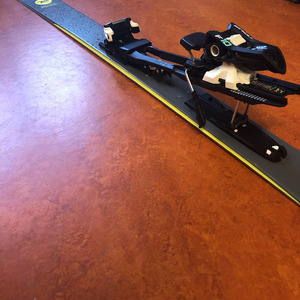
Où acheter Marker Tour F10
Marker f10 tour 2022.
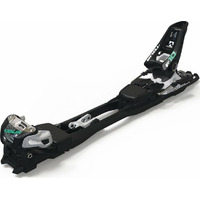
Marker F10 Tour Black/White 2023
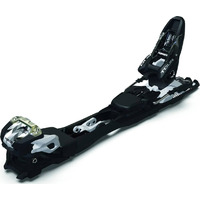
Commentaires
Aucun commentaire, a lire aussi....
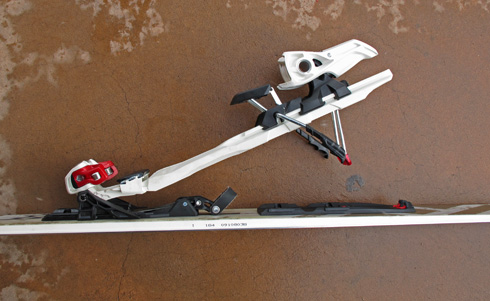
- 1997 MEDIA
- © 2024
- nous contacter
Connexion sur Skipass
Nous n'avez pas de compte créez votre compte sur skipass.
Marker Tour F 10/12 Tour Ski Binding — Real World Weigh-in
Now we’ve gotten both versions of F 12 on the scale for the reality show. Brilliant. Latest model F 12 (2010/2011) weighs 35.9 ounces (1018 gr). Original model F-12 we have (early 2010 vintage) weighs in at 36.7 oz (1040 gr). That makes the latest model a hair LIGHTER than Fritschi Freeride Plus (36 ounces), and the earlier version insignificantly heavier than Freeride. (All weights with screws and brakes.)
Yep, on your feet the weight of the two backcountry skiing bindings (Marker Tour and Fritschi) is virtually the same. Of course the Marker doesn’t have the now classic Fritschi heel lift but rather a shorter max lift that’s tougher to engage — and you do have to exit the Marker to change modes between downhill and uphill. But the Marker indeed gives you a full-on wide stance alpine type binding that tours. Hard choice between Fritschi and Marker now, if you ask me. We be testing.
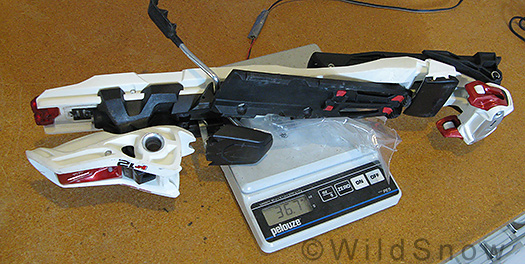
On the scale here at HQ, Marker Tour F12 original version. Latest weighs about an ounce less. Wow.
Shop for it.
And check our our Marker facility visit from Germany last winter!
WildSnow.com publisher emeritus and founder Lou (Louis Dawson) has a 50+ years career in climbing, backcountry skiing and ski mountaineering. He was the first person in history to ski down all 54 Colorado 14,000-foot peaks, has authored numerous books about about backcountry skiing, and has skied from the summit of Denali in Alaska, North America’s highest mountain.
Fritschi Diamir Eagle & Freeride Pro Template
Pnw — early season powder & sun.

Skis Marker Bindings
2023 marker f10 tour at bindings 7716w1.
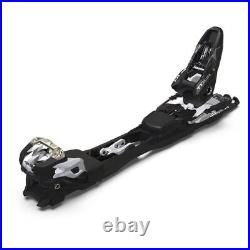
SierraDescents.com
Gear Review
Marker Tour F12

- impressive structural rigidity
- resort-worthy release safety
- less-econometric stride
- 4lbs 8oz/pair (w/brakes)
Visions of an Alpine Touring binding from a heavyweight Alpine manufacturer like Marker have been dancing in the dreams of A/T skiers for many years now—mine included.
Those dreams seemed to come true with the 2008 release of Marker's touring-capable Duke, but spontaneous performances of the Hallelujah Chorus proved a little premature: at nearly six pounds per pair, the Duke's weight placed it at the extreme edge of the touring spectrum—arguably beyond. This year, however, at long last we have an authentic touring choice from Marker, in the form of the Tour F10 and F12 bindings. The only ones not celebrating now are Fritschi.

Both Tour F10 and F12 use the same basic design as the Marker Duke, but at a significantly lower weight.
The Tour F12 in size small (265-325mm boot) with 110mm ski brakes weighs in at a Fritschi-competitive 4.49 pounds per pair. Without brakes, Marker claims 3.86lbs (1750 grams).
As with the Duke, you must snap out of the Tour when changing either to or from touring mode. In most situations, that probably isn't too much of an inconvenience, especially if you typically remove your skis when you put on or take off your climbing skins. The Tour has a release lever in the center of the binding which you push and/or pull to change modes. Note that the position of the lever precludes the possibility of unwanted mode change while skiing.
From Alpine mode, pulling the lever causes the binding plate to shift about 40mm rearward, releasing the heel to enter Touring mode. Marker claims this 40mm shift puts the ski in a more comfortable position for walking, and a more effective position for ascending and performing kick turns; However, it's really just a consequence of the binding's design. Much more significant regarding touring comfort is the position of the toe pivot, which is about a full inch farther forward than my Fritschi Explore's pivot.
Is that inch noticeable? You bet. I haven't climbed enough with the Tour to make a final pronouncement, but my initial reaction while gliding around is that the pivot point results in a significantly less comfortable stride. That said, as far as I'm aware, we've just covered every possible way in which the Tour might be considered inferior to a Fritschi step-in. To recap: you must step out of the binding to change modes, and pivot position is less ergonometric.
Let's now contemplate the not-insignificant ways in which the Tour appears markedly superior to the Fritschi:
Put your ski on the floor and snap your boot into the Marker Tour F12 binding. Listen to that deep, solid thunk as the binding snaps closed. Now grab the toe of your ski boot and wiggle it—or, I should say, try to wiggle it. In terms of release quality and retention rigidity, the Tour F12 is essentially indistinguishable from a good Alpine binding. Utterly absent is the wiggle/slop/play of my Fritschi Explores.
If you want to drive big skis with big boots and never feel your edges skitter in and out due to toe slop, the Tour is indeed a dream come true. And hold on Dynafit riders: you may enjoy a similarly rigid binding interface (I say may ), but I ask you, does your binding's release and retention mechanism really have your fullest confidence? Looking at the Tour compared to my standard Marker Griffin bindings, I see nothing to indicate that the Tour in any way offers less release safety.
So I'm just going to say it: if you want a true touring binding that you can ride with 100% confidence inbounds and out, this is it. Save one and a quarter ounces if you choose by getting the Tour F10, with a slightly lower 4-10 DIN range. Either way, you're getting extremely close to full Alpine-level performance on the downhill at Fritschi-level weight equivalency on the uphill.
Bottom line: I need a little more time with these. Check back next season for more in-depth thoughts...
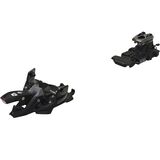
Marker Marker Alpinist 10 Touring
Black Diamond Equipment ATK Haute
Marker F12 Tour EPF Large Alpine
Marker F12 Tour Epf Binding -110MM
Marker F5 JR Tour Alpine Touring
Marker Duke PT 16 Alpine Touring
ads by Avantlink
Recommended Bindings

Review Categories
- Accessories
About SierraDescents
When there is snow, SierraDescents is Andy Lewicky's California backcountry skiing and mountaineering website. Without snow, sierradescents becomes an ill-tempered hiking and climbing blog.
Pray for snow.
2024 SierraDescents
Marker Tour F12 Review

This is my review of Marker Tour F12 . In my opinion, it is an excellent backcountry touring ski binding that gives you the best of both worlds in terms of uphill and downhill performance. It’s expensive, which is a definite deterrent, but if you can afford the Tour F12 it will give you everything you want and more to explore the winter wilds.
Keep reading to learn more about the pros and cons of this ski binding, who it is best for, and other similar alternatives to consider.
Quick Summary
Why trust me, backcountry and touring performance, downhill response, construction and durability, price and value, what i like, what i don’t like, the alternatives, final verdict.
- Where to buy: Amazon
- Best for: Backcountry touring skiers who want a reliable and effective binding option that provides effortless movement uphill and serious performances skiing back down.
- Pros: Excellent performance attributes when touring uphill. It offers high-end downhill response in terms of power transfer. Versatile. Can be used for a backcountry and resort setup on the same skis.
- Cons: Very expensive. Costs almost as much as some skis.
- Alternatives: Tyrolia Ambition 12 , G3 Ion 12 , Atomic Shift MNC 13
Should I get small or large sizes?
The small binding size will fit boot sole lengths of 265-325mm. The large binding size will fit boot sole lengths of 305-365mm.
Are these bindings good to use with wider skis?
Yes. These bindings come in a variety of brake sizes. That makes them versatile enough to work with a variety of ski widths.
Can these bindings be used as a resort binding?
They can be used for both with flying colors. The excellent downhill performance traits of the Marker Tour F12 makes them one of the best options to use if you like to ski both backcountry and the resort on only one ski setup.
I’ve been skiing almost as long as I’ve been able to walk. I’ve skied all over the world and have decades of experience skiing on, testing, and reviewing different skis and skiing equipment. I heavily researched the Marker Tour F12 and spoke with a few backcountry enthusiasts who love these bindings. Below is my detailed review.
Detailed Review of Marker Tour F12
The Marker Tour F12 has long been a top choice for backcountry skiers who want the capability to tour wherever and whenever they want without sacrificing downhill performance. If you love to get out in the backcountry but also spend a good amount of time at the resort, these bindings will have your back through it all. They are expensive, as most options in the category are, but are well worth the price tag if you have the money.
These skis are well suited for skinning long trails up to your final destination, and are built to resist the elements. They come with a lightweight design that makes them ideal for skiers looking to shed ounces and not sacrifice performance. That is why they are loved by so many backcountry purists.
A big reason the Tour F12 offers such great uphill performance is the thought-out, backcountry-focused design. The tour mode features a nicely engineered lever that sits under your boot and allows for easy up and down motion without any unwanted or premature release. The entire binding rests on a touring base plate, and you have two different sizing options to choose from.
On top of that, the F12 has two different titanium climbing aids that let you easily switch from 7-degrees to 13-degrees with your poles. That’s an obvious advantage when you’re really digging in on a long hike or skin track, and it gives you quick, easy movements with each step. All of those elements combine for somes serious uphill performance.
One of the best attributes of these bindings is the fact that they give you excellent downhill performance right alongside their serious touring capabilities. Marker is one of the top brands in the binding business and has a strong reputation for creating performance-focused options that meet the needs of high-level skiers. The F12 Tour brings that storied performance into a touring binding, and the result is downright awesome.
When you reach the top of a long ascent and switch these bindings into ski mode, you’re going to be ready for anything. There is not a single terrain or condition that these bindings can’t handle. No matter what your ability is, they will deliver high-end power transfer to translate each and every move of your legs through your boots and into your skis. They respond on a dime. That’s quite impressive for such a lightweight option.
Another aspect I really like about these bindings is that they don’t have to exclusively be used in touring situations. They provide you with the same excellent downhill traits whether you’re on a deep backcountry line or bombing a groomer at the resort. That versatility makes them a good option for skiers who want a one ski setup to use wherever their adventures might take them.
The Marker Tour F12’s engineering and construction helps it shine in many mountain situations. The bindings are constructed to withstand anything that comes their way. In addition, they have durable plastics and metals that allow them to easily last for many seasons of steady skiing. That ensures they won’t wear down after heavy use.
The toe piece features a Triple Pivot Light Toe design that’s both compact and effective at holding your boot in place whether headed uphill or down. This toe piece also has an aluminum bridge to add a little extra strength and stability without putting on too much weight. An anti-friction device, similar to what comes on almost all Marker bindings, helps to keep excess snow from building and allows you to quickly step in and stay secure.
The heel piece utilizes a hollow linkage design that makes them compatible with a wide variety of boots, touring and resort alike. This hollow design also helps to minimize weight, and is constructed to withstand heavy use. The extended power frame also helps increase performance across the board. You also can pick between various size options, which increase the versatility.
For all the amazing performance features that the Marker Tour F12 has to offer, they are pretty expensive. Though they sit right in the range of other high-end alpine touring bindings , that doesn’t make them affordable. If money isn’t a big concern, these bindings offer great value as a result of their rugged design and excellent performance. If you’re on a budget, that value somewhat drops.
The Marker Tour F12 Bindings are some of the best alpine touring ski bindings out there. That means they are great if you like to spend your days off the beaten path searching for fresh lines and untouched snow. They are built to withstand the rigorous demands of touring and their lightweight nature comes in handy when you’re on the trail of a once in a lifetime experience.
I like the ease with which you can switch from touring mode to ski mode as well. With a change of a lever, the entire binding moves 40mm backward for when you’re heading uphill. That may not sound like much, but the little shift of the binding greatly increases your range of motion. It also keeps you balanced and active when your heel is loose.
The bindings’ outstanding downhill performance is also something that’s easy to like. Even if you aren’t a backcountry skier, these bindings will give you excellent hold, power transfer, and response no matter what style of skiing you like the most. Touring bindings will often sacrifice some downhill ability to shed ounces and keep things light. That’s far from the case here.
The biggest aspect I dislike about these bindings is their high price. They are expensive. There’s no way around that. The elevated price tag alone will keep them out of the realm of possibility for a lot of skiers because it’s hard to justify shelling out that much cash on something that isn’t a set of skis. That said, they are definitely worth it if you can afford them. It’s just hard to recommend them without putting the price into play.
My only other complaint is, even though Marker claims the F12’s are crampon compatible, wearing the claws on your boots and strapping into the bindings can hurt their longevity. That’s easy to understand and, although you can keep your crampons on when you’re in a pinch, I would try to limit how much time you spend stepped in with these on.
There are plenty of options in the world of alpine touring bindings these days. If you want to explore some nice alternatives to the Marker Tour F12, check these out:
- Tyrolia Ambition 12 – This is another one of the top options in the world of high-quality touring bindings. They give you serious uphill advantages without sacrificing downhill performance. They are versatile enough to be used at the resort and in the backcountry, and are compatible with nearly every boot length. The Freeflex system is effective and makes these bindings easy to use.
- G3 Ion 12 – Backcountry focused skiers will love everything that the G3 Ion 12 ( review ) has to offer. These are an extremely lightweight option best suited for a strictly touring setup. They are reliable and durable in a way that keeps you engaged uphill. On the way down, they also offer excellent retention and hold. The wide toe jaw and tech pins are compatible with a lot of touring boots, and it’s easy to switch from touring to ski mode.
- Atomic Shift MNC 13 – This is another great backcountry touring binding. They are actually some of the best you can find because of how they rival the Marker Tour F12 across the board. They are more expensive than just about every other option as well. Excellent uphill abilities combine with serious downhill performance to give you a reliable binding in the backcountry and beyond.
The Marker Tour F12 is a solid, all-around binding. It gives you the best of both worlds in terms of uphill and downhill performance, and comes with an innovative construction designed by one of the biggest binding brands in the world. These bindings are expensive, but their durability and performance will give you years of steady use. A great choice for both the backcountry and the resort.
Leave a Reply Cancel Reply
Your email address will not be published. Required fields are marked *
Related Posts
Purl ski wax review, 5 best alpine touring bindings, 5 best kids ski bindings.

TheSkiGirl.com is a resource site for skiers of all levels to learn and improve skiing. Disclaimer: As an Amazon Associate, I earn from qualifying purchases.

Suchformular
- Bergsteigen
- Klettersteig
- Winterwandern
- Lesertouren
- Tourenkarten
- Hüttentouren
- Weitwandern
- Deutschland Allgäuer Alpen Ammergauer Alpen Bayerische Alpen Chiemgauer Alpen Karwendel Wetterstein
- Österreich Tirol
- Schweiz Tessin Graubünden
- Italien Südtirol Dolomiten Gardasee Trentino Aostatal
- Europa Frankreich Slowenien Spanien
- Weltweit Himalaya
- Tipps Bücher Filme Apps
- Ausrüstungstests Wandern Trekking Klettern Klettersteig Hochtour Skitour Lawinenausrüstung Camping
- Marken & Produkte Jacken Hosen Schuhe Rucksäcke Schlafsäcke Zelte
- Produktpflege & -nutzung
- Allgemeines
- Auf Hochtour
- Auf Skitour
- Auf's Dach der Alpen
- Kletterwissen
- Lawinenkunde
- Sicherheit am Klettersteig
- Leserservice
- Gewinnspiele
- Kletterhallenfinder
- Kleinanzeigen
- Reiseangebote
- Partner/Fachhändler
- Geschichte des BERGSTEIGER
- BERGSTEIGER Team
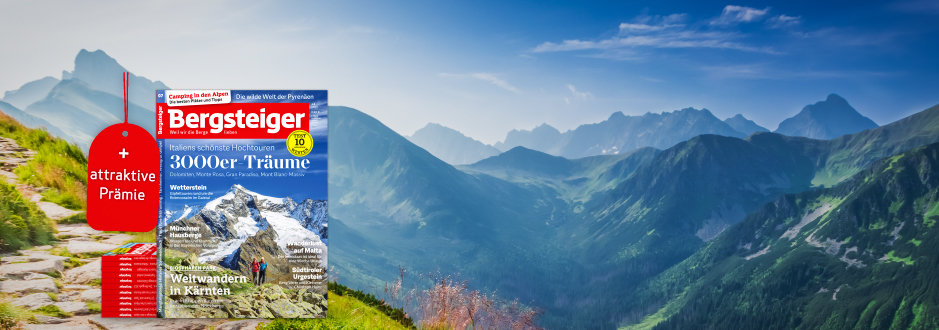
Tourentipps in den Alpen, Tourenberichte, beeindruckende Bildstrecken und 12 herausnehmbare Tourenkarten!

Lesen Sie 3x Bergsteiger und sichern Sie sich eine attraktive Prämie Ihrer Wahl!
Im Test: MARKER Tour F 10 Skitourenbindung
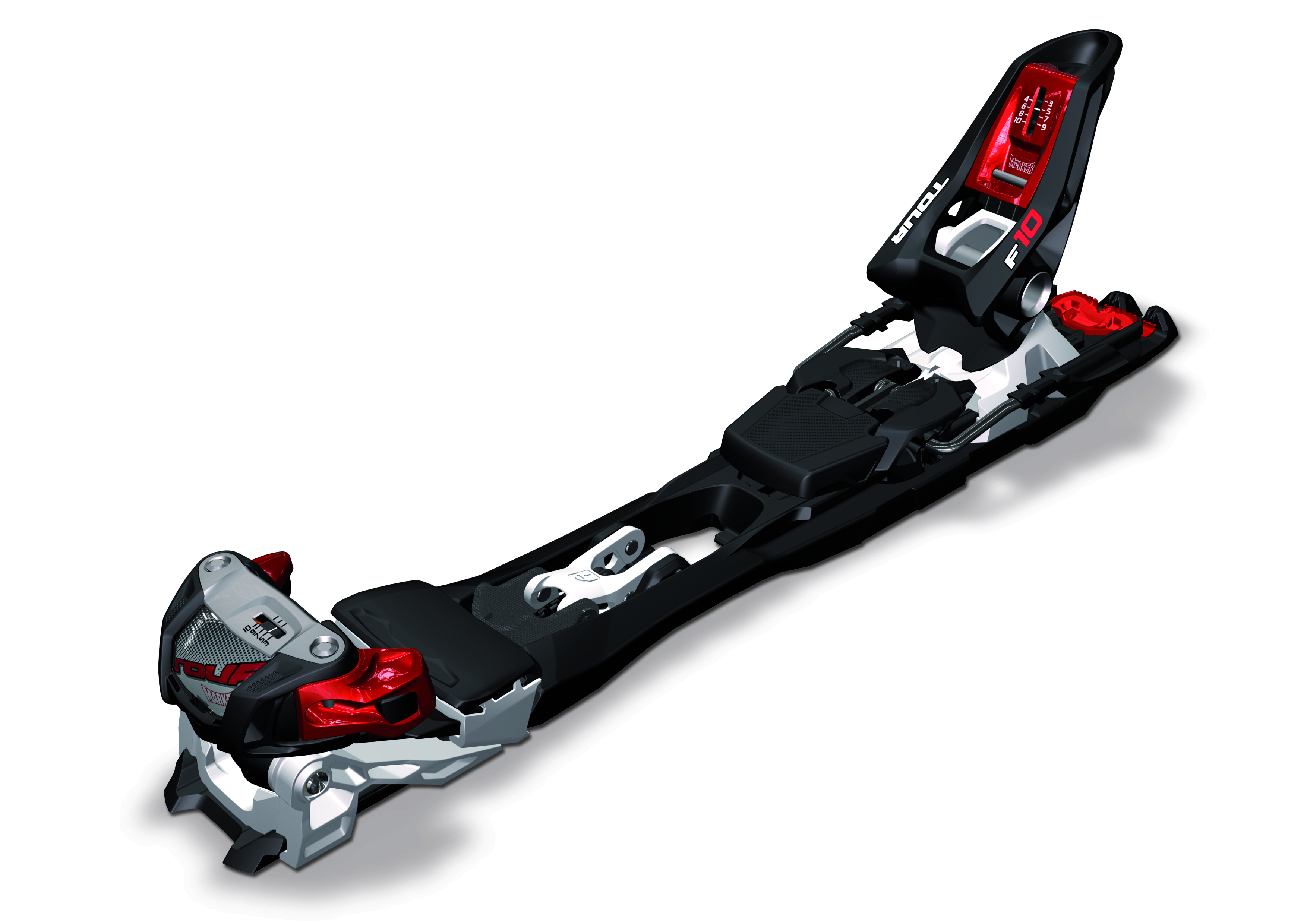
Die stabile Bindung für Skitoureneinsteiger und Leichtgewichtige ist sehr einfach zu handhaben. Dank anpassbarer Gleitplatte für die Seitenauslösung ist sie sehr zuverlässig. Die Umstellung auf Abfahrt ist schneeanfällig, und man muss dazu aussteigen.
MARKER Tour F 10 Skitourenbindung auf einen Blick
Weitere skitourenbindungen im vergleich:.
Die TYROLIA AAAmbition 12 Skitourenbindung im BERGSTEIGER-Test. Zusammen mit neun anderen aktuellen Skitourenbindungen prüfte BERGSTEIGER-Tester Christian Schneeweiß die... mehr >
Die SKITRAB TR 2 Skitourenbindung im BERGSTEIGER-Test. Zusammen mit neun anderen aktuellen Skitourenbindungen prüfte BERGSTEIGER-Tester Christian Schneeweiß die Produkte... mehr >
Die SALOMON Guardian WTR 13 Skitourenbindung im BERGSTEIGER-Test. Zusammen mit neun anderen aktuellen Skitourenbindungen prüfte BERGSTEIGER-Tester Christian Schneeweiß die... mehr >

- Laura Dahlmeier: Von Olympischem Gold zu Siebentausender-Gipfeln - Ein Abenteuer im Pamir-Gebirge
- Erstbesteigung des Yermanendu Kangri: Ein Triumph für Simon Messner und Martin Sieberer
- Letztes Kapitel einer Vision: Das MMM Roca öffnet 2024 am Helm in Sexten seine Türen
- Reinhold Messner äußert sich zu aberkannten Rekorden
- Die 8000er-Debatte und Eberhard Jurgalski – Ein Sturm im Gipfelbuch
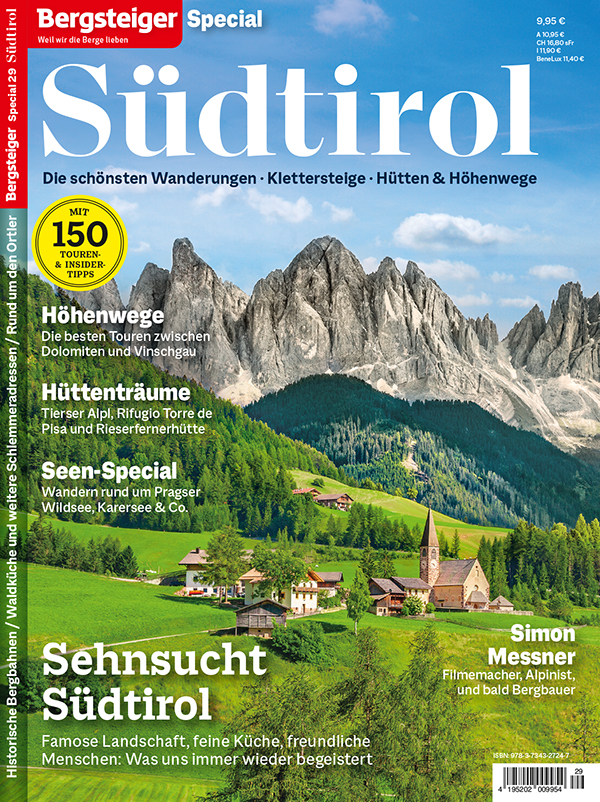
Südtirol zieht uns immer wieder in seinen Bann. Aber warum eigentlich? Sind es die wild gezackten Berge der Dolomiten, ist es das südliche Flair, das gute Essen oder sind es doch die Menschen? Das Bergsteiger Special begibt sich auf Spurensuche und präsentiert die schönsten Wanderungen, Klettersteige, Hütten und Höhenwege. Mit 150 Touren- und Insider-Tipps!
Jetzt bestellen
- Datenschutz
- Cookie Einstellungen
- bruckmann.de
- huettentouren.net
- planetoutdoor.de
- verlagshaus24.de
- selbermachen.de
- Bruckmann Verlag
- Stellenangebote
Tourenski selber bauen

- eMagazine Login
Skitouren-Bindungen im Test 2018
+++ Dieser Artikel beinhaltet den Produkttest aus der Saison 2017/18. Der Test Skitouren-Bindungen der Saison 2021/22 ist hier zu finden. +++

Gemessener Wert (re / li): 334 Nm / 323 Nm || Abweichung vom Sollwert (re / li): 4,4% / 0,9% || Sollwert nach DIN EN: 272 Nm – 368 Nm (320 Nm /– 15%)
Die perfekte Wahl für Tourengeher, die gleichermaßen auf Gewicht, Handling und Zuverlässigkeit achten und die Abfahrt ebenso wichtig nehmen wie den Aufstieg. Auch wenn die Performance auf der Piste genauso zählt wie die im Gelände.
Die Marker F10 Tour gibt sich im Vergleich mit den ganzen magersüchtigen Pin-Bindungen wuchtig. Und eine Bindung für lange Aufstiege ist die Marker F10 auch nicht (mehr). Der Gehkomfort ist auch gegenüber der Fritschi Scout spürbar geringer. Die Kraftübertragung ist aber eine der besten und auch das Handling ist in Ordnung. Auch bei den Z-Werten ist die Marker die Bindung, die die besten Ergebnisse erreicht.
Für schnelle und weite Aufstiege ist die Marker nicht gemacht. Wem aber Auslöse-Sicherheit und Abfahrtsperformance wichtiger sind als ein geringes Gewicht, der ist mit der F10 bestens beraten. Eher eine Freeride-Bindung.
- sehr gute Kraftübertragung
- hohe Auslöse-Sicherheit
- schlechter Drehpunkt
- ATK Raider 12 2.0
- Dynafit ST Radical Turn
- Dynafit ST Rotation 10
- Fritschi Scout 11
- Fritschi Vipec Evo 12
- Fritschi Tecton 12
- Marker F10 Tour
- Marker Kingpin 10
- What's App

IMAGES
VIDEO
COMMENTS
Downhill Mode. The Marker Tour F10 features a DIN range of 3-10 and is designed for skiers that weigh up to 230 lbs. If you are on the higher end of the DIN range, like to huck yourself off things, or on the higher weight range, I recommend checking out one of Marker's beefier AT bindings. At 5'9″ and 135 lbs.,
4.5/5. The Marker F10 Small Tour Ski Bindings are ideal for skiers looking to venture into Alpine touring without investing in a new setup. Compatible with almost any boot and sole type, their simple, easy-to-use design makes them a great entry-level choice. Despite being heavier and having a higher ride height than other touring bindings ...
Test conditions. When I bought these: January 2021; Days tested: 20; Boots: Dalbello Panterra 120 2021; ... rider to ski mode, and step down, and they're solid. These require a bit more work. In order to change modes on the Marker F10 Tour, I need to take off the boot, clean out the track of as much snow and ice as I can, set the binding flat ...
Overview. MARKER's F10 Tour is an ideal entry level touring binding that can offer years of great performance. Focusing on producing the right binding for the end user is MARKER's DNA. For the skier who wants a very light all-day touring setup with solid all-mountain performance, the Tour 10 features a DIN range of 3-10, making it a great ...
Not any more. Built based on a 76mm minimum ski width, the innovative Marker Tour 12 and and Tour 10 bindings feature new, lighter weight Triple Pivot Compact toe, and Hollow Linkage heel components. The new toe and heel sit atop a smooth-flexing frame design which features a new, glove-friendly release lever that puts the binding in touring mode.
There are a number of other frame bindings worth having on your radar, including the aforementioned Tyrolia Ambition and Marker F10/F12 Tour. All three models have competitive price tags (you'll spend up for the 12-DIN versions), but the Scout is the lightest of the group by a decent margin (the Ambition 10 and F10 Tour are 4 lb. 5.1 oz. and ...
Read the full review here: http://backcountryskiingcanada.com/index.php?p=page&page_id=Marker-Tour-F10-Alpine-Touring-Binding-reviewBackcountry Skiing Canada...
Marker F5 Jr Tour. A new frame binding option aimed at the youth tourer, the Marker F5 Jr Tour Alpine Touring Ski Bindings use a composite frame like the Duke and Baron but with the locking latch at the rear rather than underneath. With an easy-going DIN range of 1.5 to 5, this is a touring option that will let the smaller skier rock the same ...
The Marker Tour gets the Teton Tested treatment on Teton Pass. Photos by Wes Van Duser ... The binding passed the "Wapoww!!" test. The Tour, at 1018 grams a binding, is right around the same weight as another legendary touring binding, the Fritschi Freeride Pro. ... The Tour comes in F10 and F12 models and two length sizes; the small ...
Boot Compatibility. Multinorm Compatible - Height-adjustable gliding plate to be compatible with all boot soles on the market. Compatible with: Alpine (ISO 5355), Touring (ISO 9523) and GripWalk (ISO 23223) soles. Easy to adjust: Pozi screw at the front to adjust height of gliding plate. Size Small - Fits BSL (Boot Sole Lengths) 265 - 325 mm.
Previous model F Tour might have been a bit weak in the frame at the toe area. At the least, it tends to be fairly twisty in tour mode, especially while sidehilling. New version (to left) has noticeable beef in that area. Marker Tour F 12/10 frame underside, 2011/2012 model to left. Upper left arrow points to anti-icing Teflon tape on new model.
Marker Tour F10 ; Marker Tour F10. Brand: Marker Model year: 2011 Compare What do you think about Marker Tour F10? Write a review. 5 . 4 . 3 . 2 . 1 . 3.5. 2 reviews. lsk (Guest) 02/02/2023 . Strengths: stable easy to adjust for boots and the preload Weaknesses: no Summary: lovely bond. Translated by Google ・ Show original. Zall. 22/12/2017 .
Bonjour à tous, Nouveau test et cette fois je suis super content de vous proposer celui-ci car après des mois de réflexion, j'ai fais l'acquisition des fixations Marker F10 Tour modèle 2021 en noir et blanc. Comme d'habitude je vais vous expliquer pourquoi ces fixations, sur quoi je les utilisent et mon ressentis.
Marker Tour F 10/12 Tour Ski Binding — Real World Weigh-in. Now we've gotten both versions of F 12 on the scale for the reality show. Brilliant. Latest model F 12 (2010/2011) weighs 35.9 ounces (1018 gr). Original model F-12 we have (early 2010 vintage) weighs in at 36.7 oz (1040 gr). That makes the latest model a hair LIGHTER than Fritschi ...
The Marker F10 Tour AT Bindings offers a whole new form of freedom in the mountains that are just waiting to be discovered. Sizes: Small 265-325/ Large: 305-365. DIN Range: 3.0-10.0. Toe System: Triple Pivot Light 2. Heel: Hollow Linkage 2.
Both Tour F10 and F12 use the same basic design as the Marker Duke, but at a significantly lower weight. The Tour F12 in size small (265-325mm boot) with 110mm ski brakes weighs in at a Fritschi-competitive 4.49 pounds per pair. Without brakes, Marker claims 3.86lbs (1750 grams). As with the Duke, you must snap out of the Tour when changing ...
The Marker Tour F12 is a solid, all-around binding. It gives you the best of both worlds in terms of uphill and downhill performance, and comes with an innovative construction designed by one of the biggest binding brands in the world. These bindings are expensive, but their durability and performance will give you years of steady use.
Die MARKER Tour F 10 Skitourenbindung im BERGSTEIGER-Test. Zusammen mit neun anderen aktuellen Skitourenbindungen prüfte BERGSTEIGER-Tester Christian Schneeweiß die Produkte auf Funktionalität, Handhabung und mehr. Die stabile Bindung für Skitoureneinsteiger und Leichtgewichtige ist sehr einfach zu handhaben.
Skitouren-Bindungen im Test 2018 - Marker F10 Tour. Skitouren-Bindungen im Test 2018. 10 Modelle im Vergleich. Mit Abfahrt-Tipp, Komfort-Tipp, Preis-Tipp, Allround-Tipp, und Testsieger. ... Die Marker F10 Tour gibt sich im Vergleich mit den ganzen magersüchtigen Pin-Bindungen wuchtig. Und eine Bindung für lange Aufstiege ist die Marker F10 ...
Mit den beiden Bindungen Tour F12 und Tour F10 gelingt Marker der erfolgreiche wiedereinstieg in das Feld der Tourenbindungen. Der Start mit einem Ispo arwar...
Marker Tech Manual 2023-24 - 3. Marker Tech Manual 2023-24 - 3. CONTENT PAGE 13 SPECIAL CASES 13.1 Competition Bindings 13.2 Monoski 13.3 Adjustment outside of the standards 13.4 Replacing ski brakes 13.5 Replacing ski brakes Duke PT, Royal Family, FDT & Tour 13.6 Replacing ski brakes Xcomp, Race line, TCX 13.7 Replacing ski brakes Compact Step ...